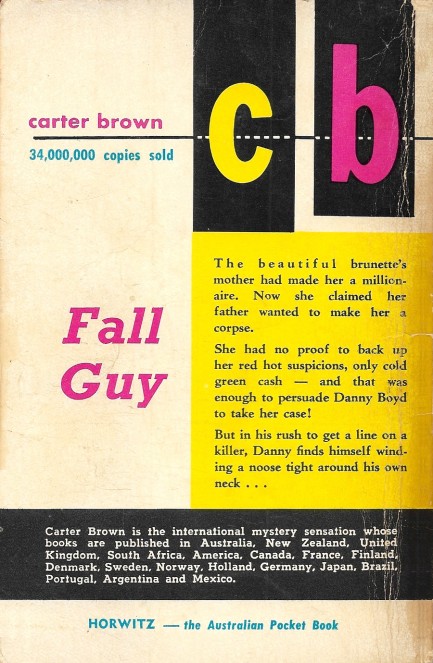 Elke snags seashells by the seashore. 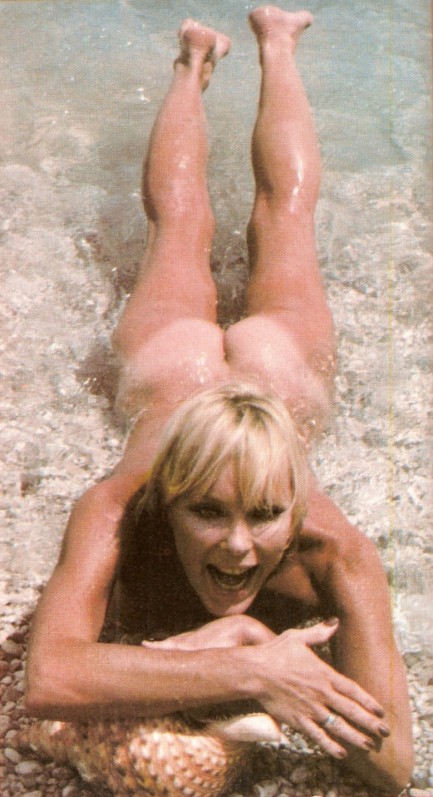
German star Elke Sommer shows her beach bum in this shot made during a photo session in Haiti in 1978, and first published in the the U.S. magazine Eros. Sommer is another of those performers who was huge during her time, but doesn't have what today most film buffs consider many quality efforts among her nearly one hundred movies. A Shot in the Dark and The Prize are probably the best remembered from her mainstream output, while cult fans tend to gravitate toward Lisa and the Devil, The Wrecking Crew, and of course Deadlier Than the Male, which we've seen and written about more than once (feel free to click its keywords just below). We're going to explore a few more of those hundred movies of hers, so maybe we'll uncover a treasure the way Sommer has uncovered the giant conch shell she's hanging onto.
 Cold War spies make waves in the City of Canals. 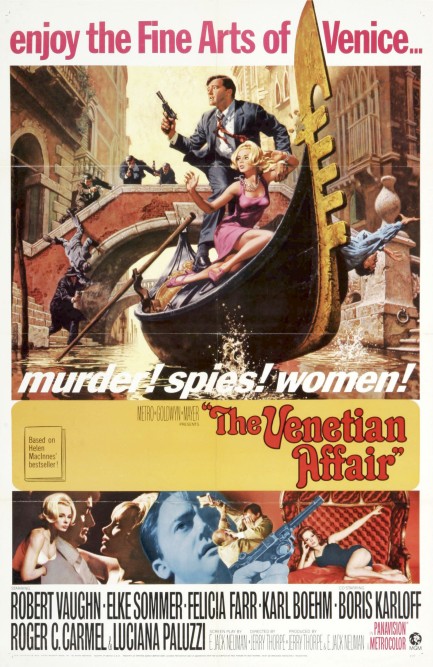
The Venetian Affair, which premiered today in 1966, has a rather interesting promo poster. It was painted by U.S. artist Frank McCarthy, who was big in paperback covers early in his career, moved into high-budget movie promos such as James Bond posters, and finally made a mark in realist fine art. We love this piece from him. There's a lot going on. If you check out his effort for You Only Live Twice here you'll see how dense and chaotic his work could be, same as above, where he has people falling off the bridge, off the gondola, and guns being brandished everywhere. In addition, his likenesses of the movie's stars are good. He was a major talent.
The first observation you might make while watching The Venetian Affair is that it would be impossible to make a similar movie in that city today. Nearly four million tourists visited Venice in 2022, making nearly every street—and certainly every site of special historical note—like the mass exodus from a just-completed football game. With that level of humanity about, closing parts of the city or main squares—while maybe possible—would not be practical or economical.
But The Venetian Affair was made back when quiet streets and dark corners existed. Old world architecture always makes for a good spy movie backdrop. That's exactly what you get in this adventure about a mind control drug being used to foment conflict between the U.S. and U.S.S.R. Robert Vaughn stars as a former CIA agent who was fired after he married Elke Sommer, who was suspected of being a double agent. Vaughn never found out whether that was true because he and Sommer were torn apart by turbulent events. But when a bomb blows up a Venice political conference and Sommer is thought to be involved, the CIA drags Vaughn back into its clutches to find Sommer, as well as the crucial clue that might explain the bombing.
Vaughn is a cool and composed actor, any movie with Sommer is one we'll watch, and co-stars Felicia Farr, Luciana Paluzzi, Ed Asner, and the venerable Boris Karloff are all enticements, but we can't say The Venetian Affair is a scintillating example of a Cold War spy flick. It's such a fertile sub-genre, one that produced some of the best movies of 1950s through 1970s. Even against the beautiful Venice backdrop it mostly falls flat due to a screenplay that never hits any highs. But that doesn't mean you shouldn't watch it. Though it lacks highs, it also lack any serious lows. You can spend your time worse ways. Plus—Sommer. What more do you need?
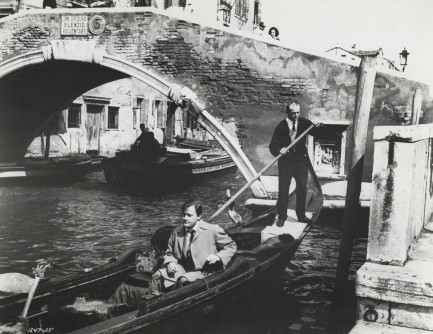 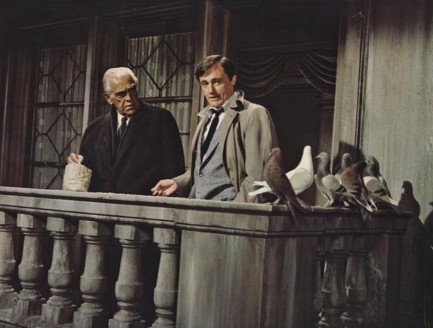 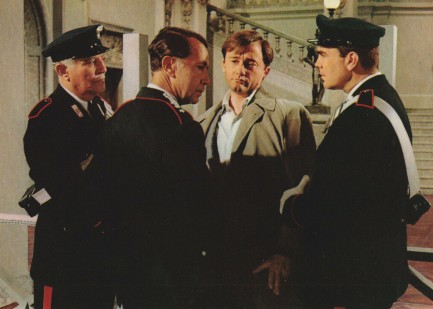 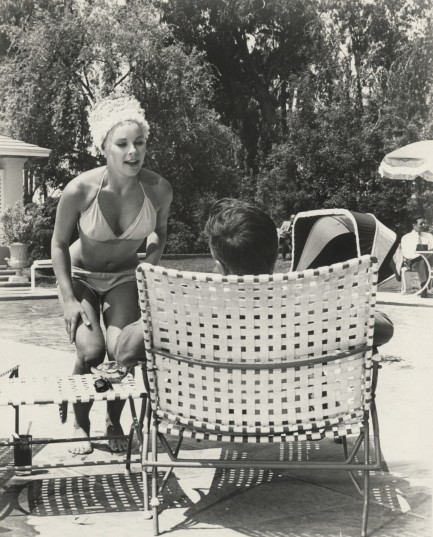 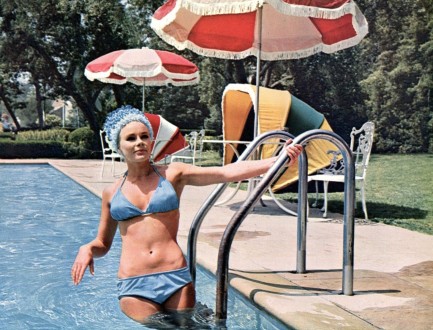 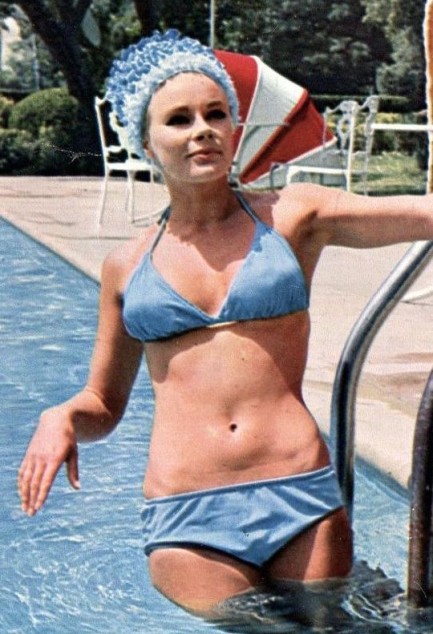 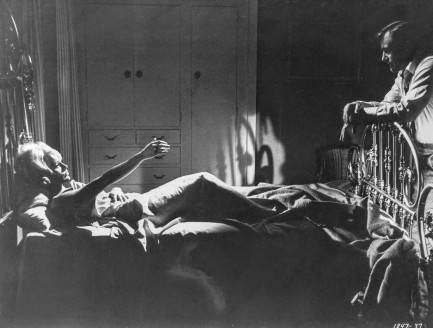 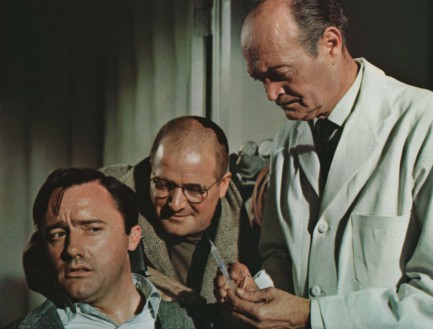 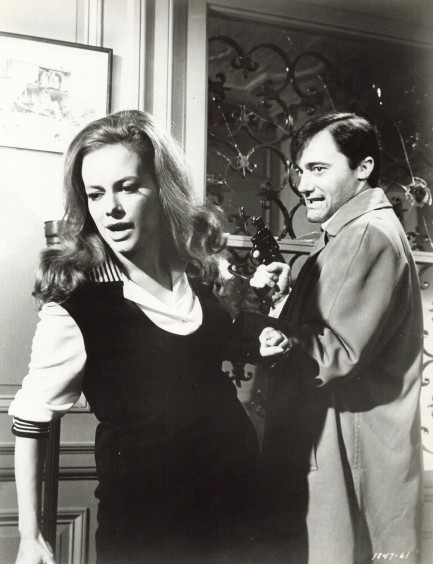 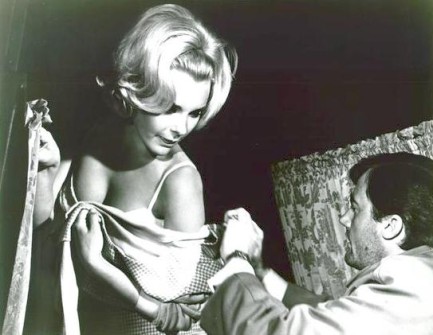 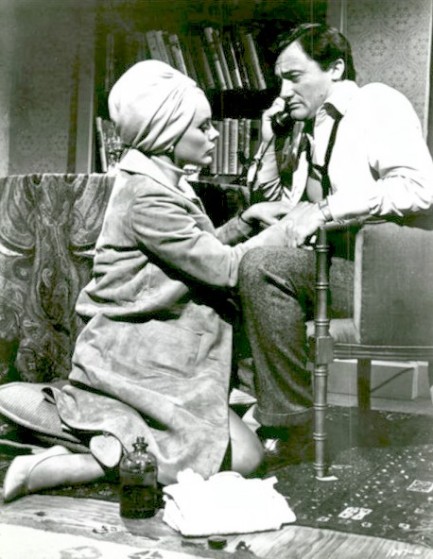 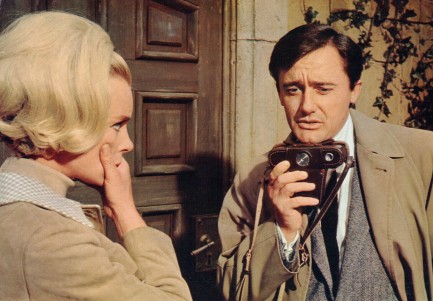 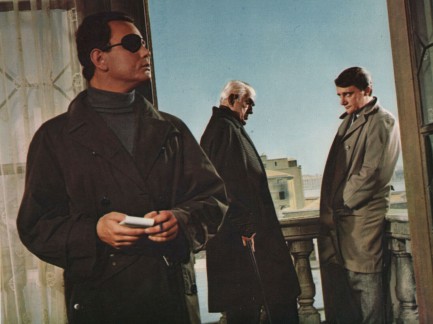 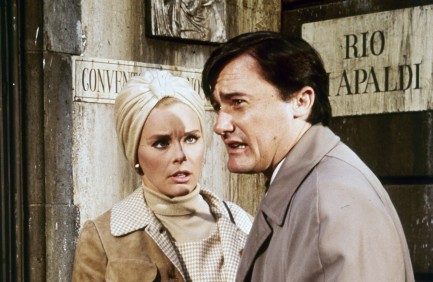 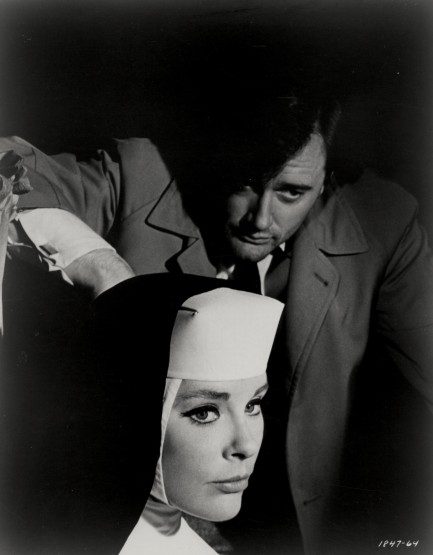 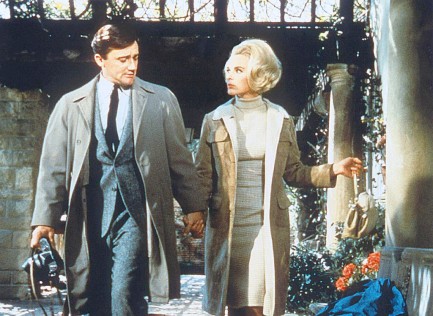 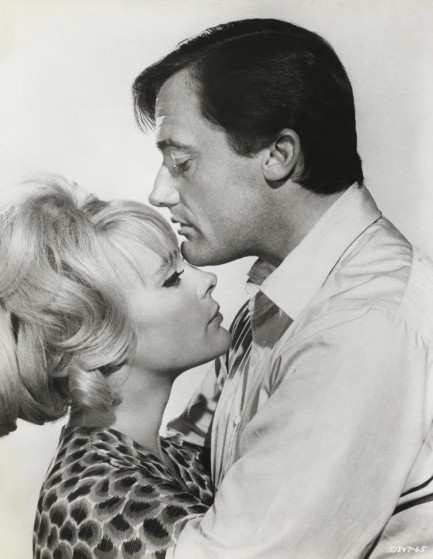 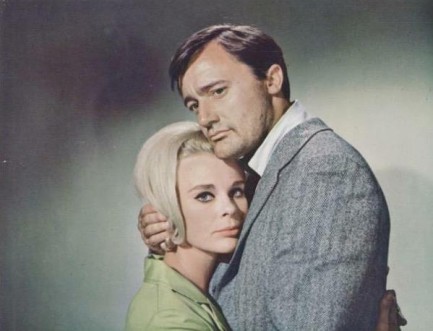 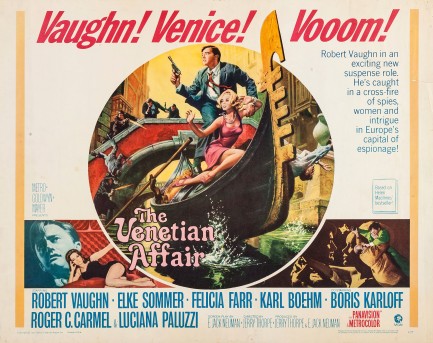 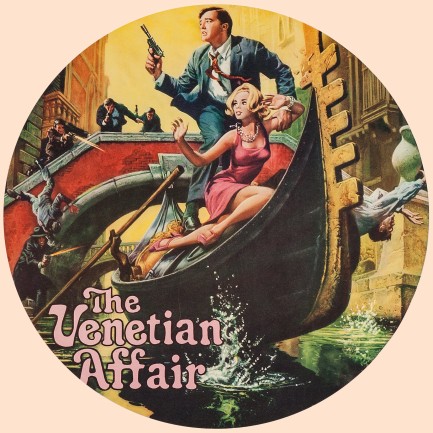
 Sommer and Koscina add up to one great day. 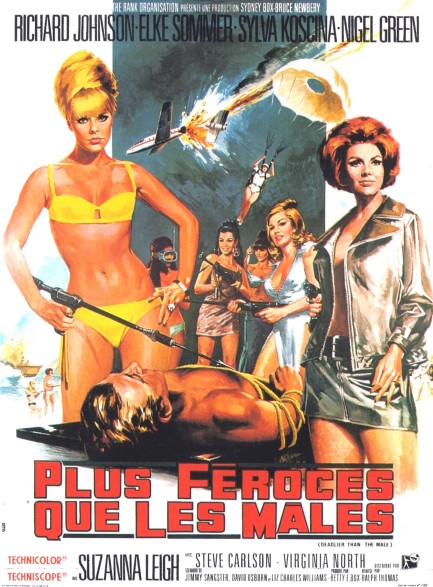
We've looked at the output of Italian illustrator Jean Mascii a few times. Above you see his work again, this time on a poster for the James Bond-style adventure Plus féroces que les mâles, which first showed in France today in 1967 but had its global premiere months earlier in England as Deadlier Than the Male. Over four decades, working from the early ’50s until the late ’80s, Mascii painted almost 1,500 movie posters, hundreds of book covers, and a copious amount of print advertising. You can click his keywords at bottom to see a few more posters we've shared on our site, or click here to take the express lane to one of his very best.
The “deadlier” in Deadlier Than the Male refers to co-stars Elke Sommer and Sylva Koscina, two of the more beautiful products of the mid-century era, who play assassins. We've shared posters for the film from Japan—twice—and the former Yugoslavia. Returning to it yet again is mainly an excuse to share some of the many production photos we've found—to go along with this one, this one, and this one. Today we're restricting ourselves to only Sommer and Koscina's bikini shots, because the skin and smiles say summertime to us. There are drawbacks to movie stardom, so we hear, but some days surely must be just fine.
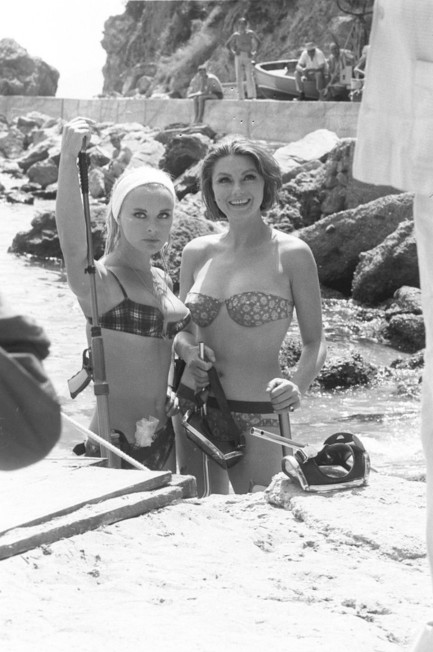  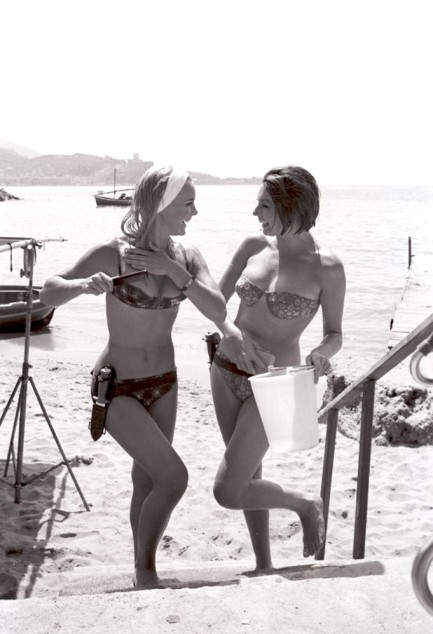 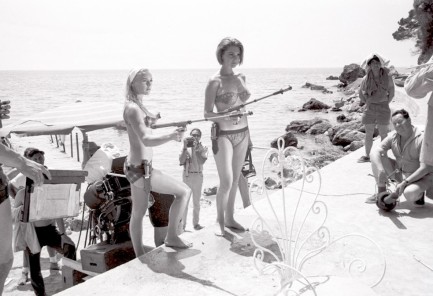 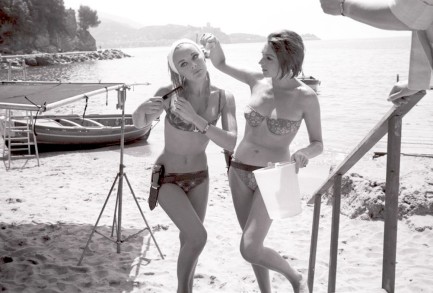 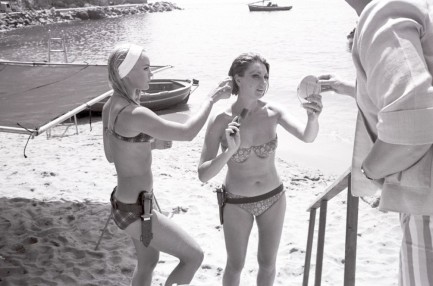  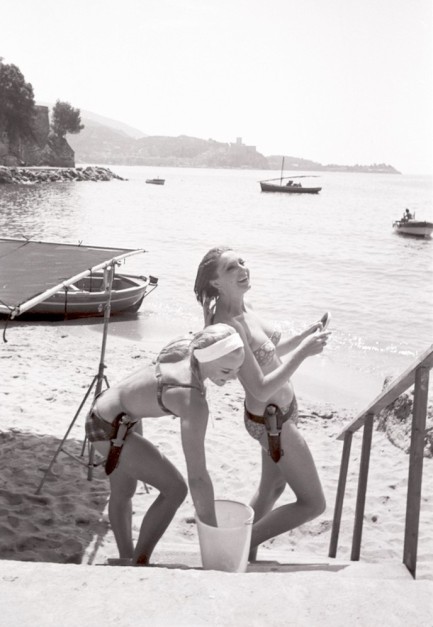 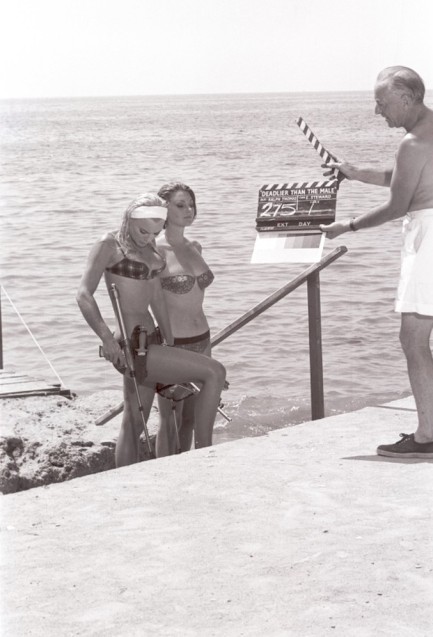 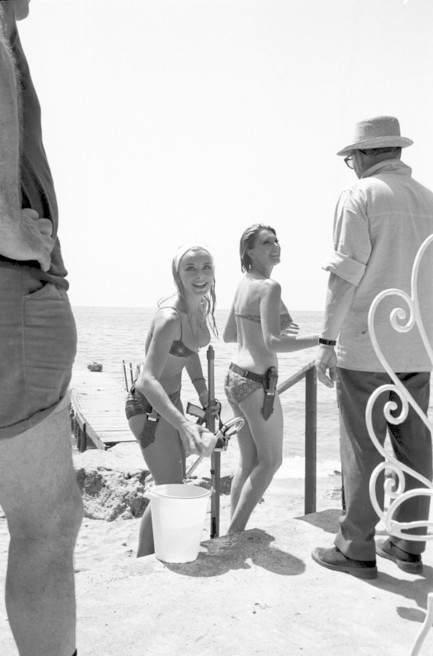 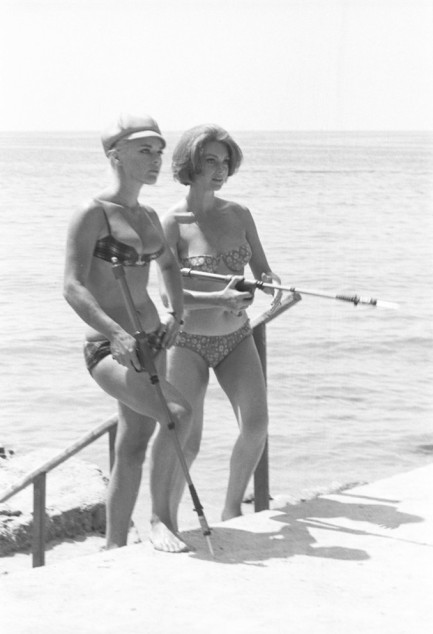 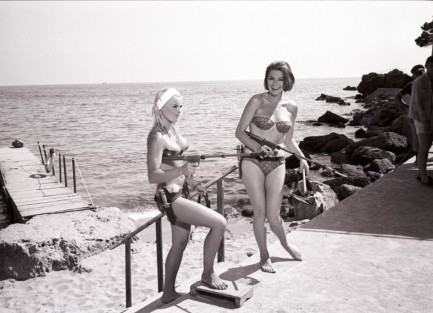 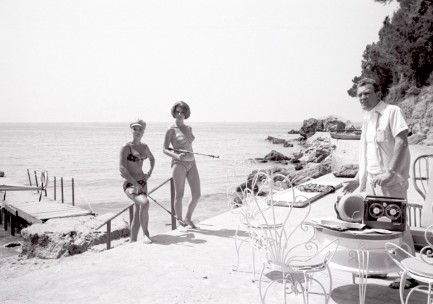 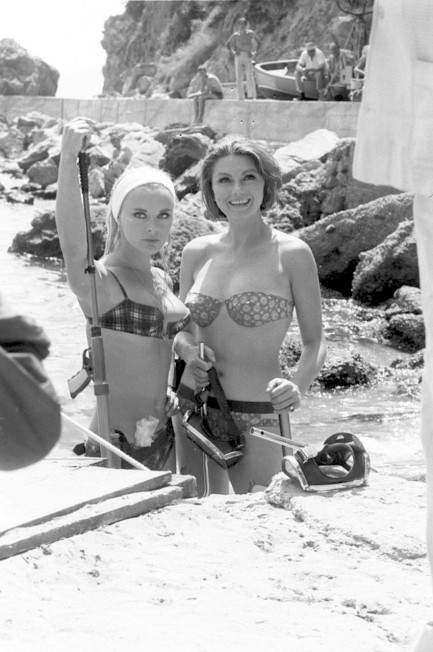 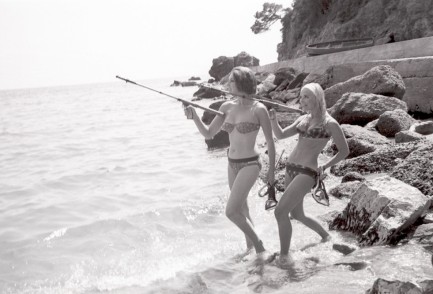 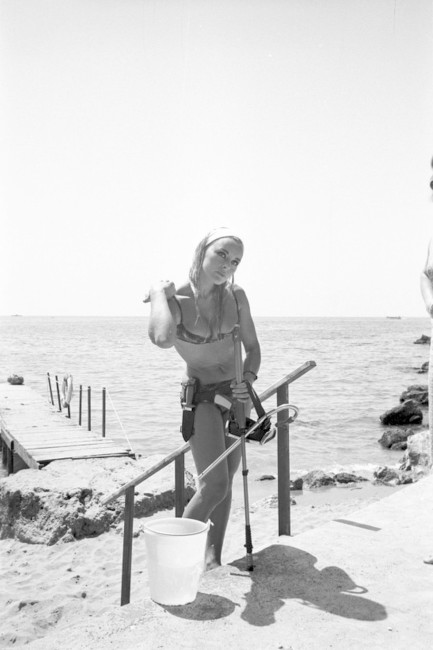 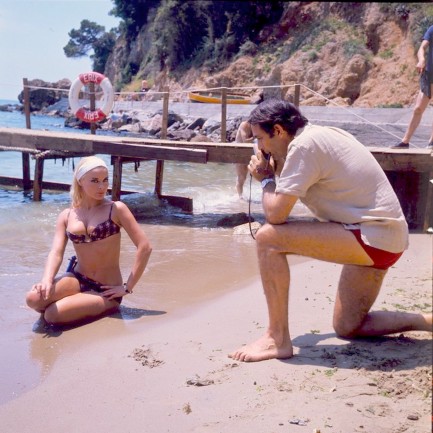 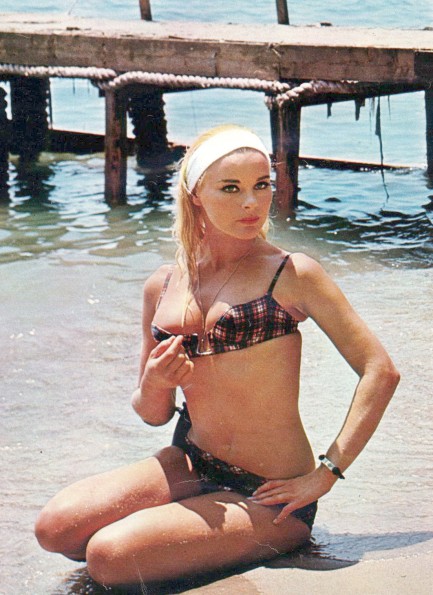 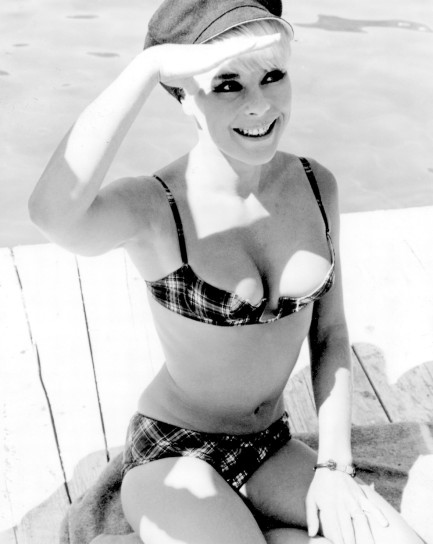  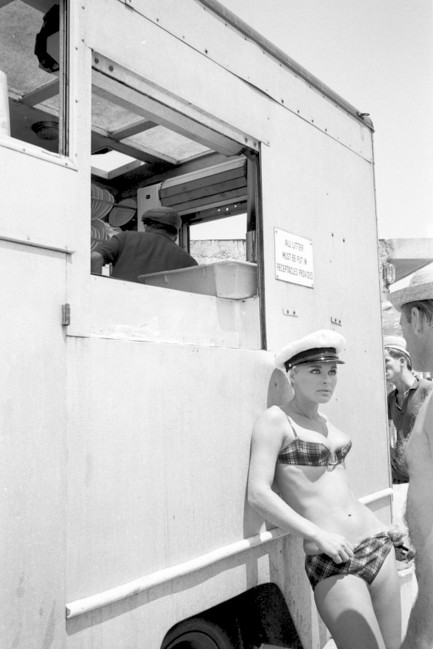 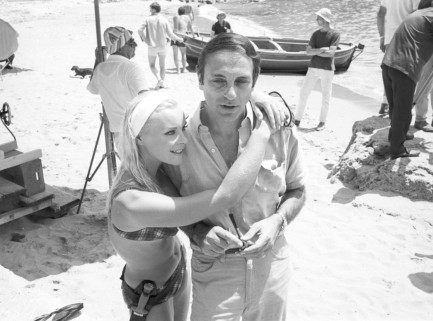 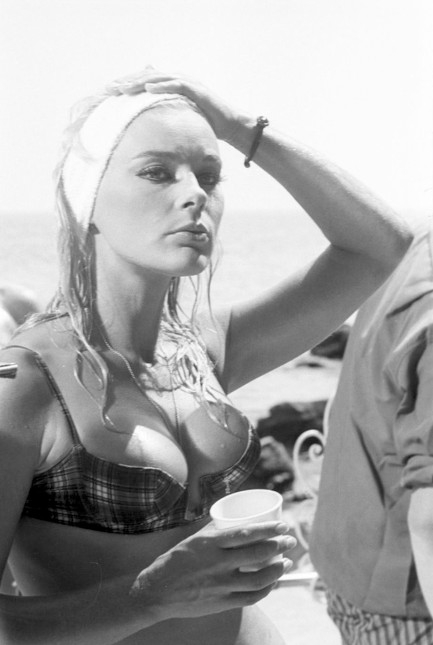 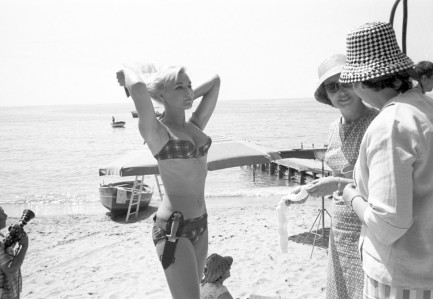 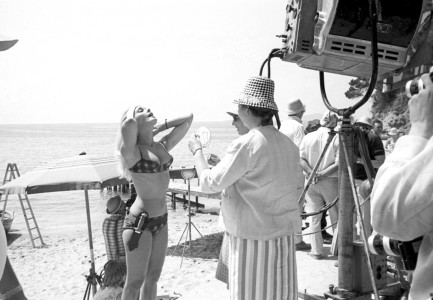 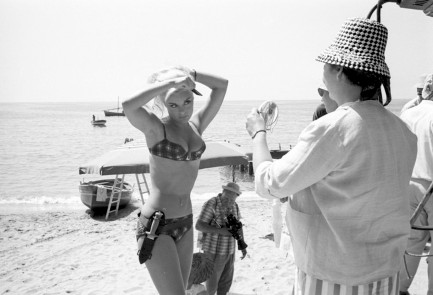  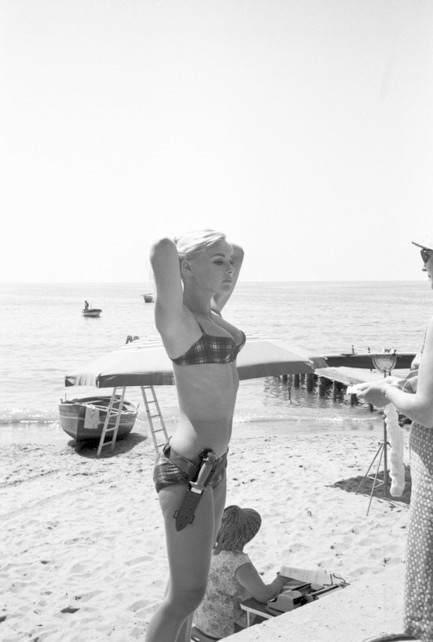 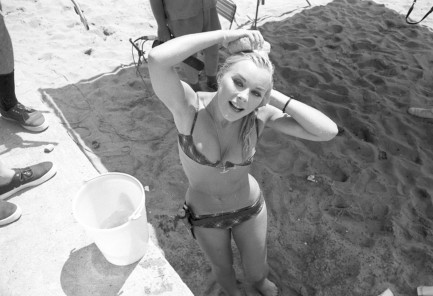 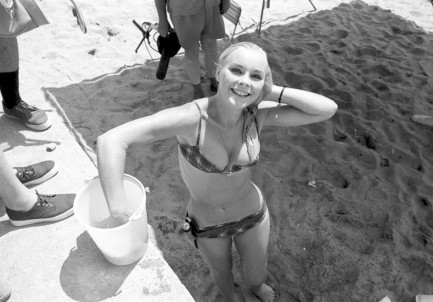 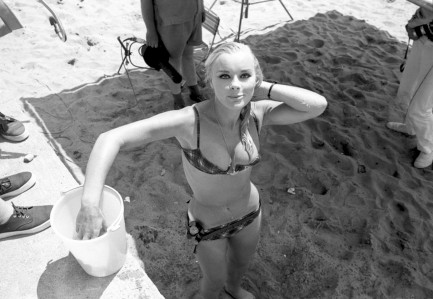 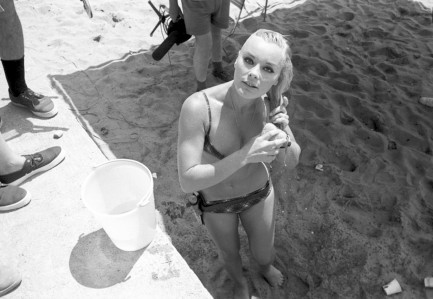 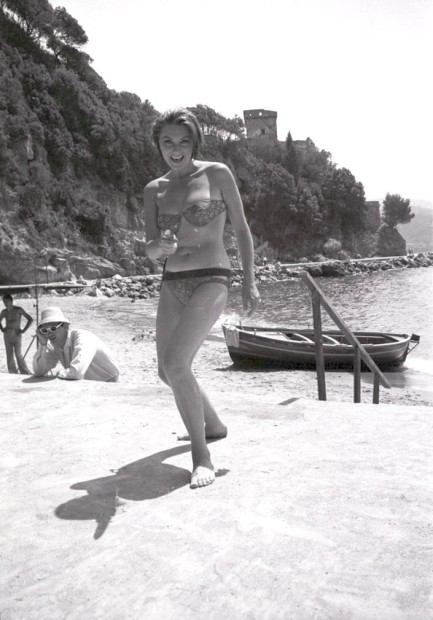 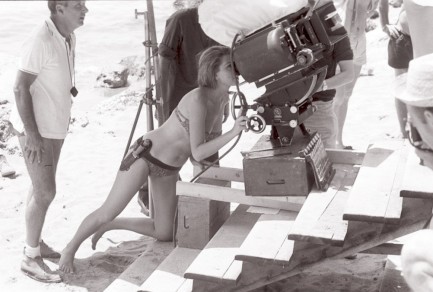 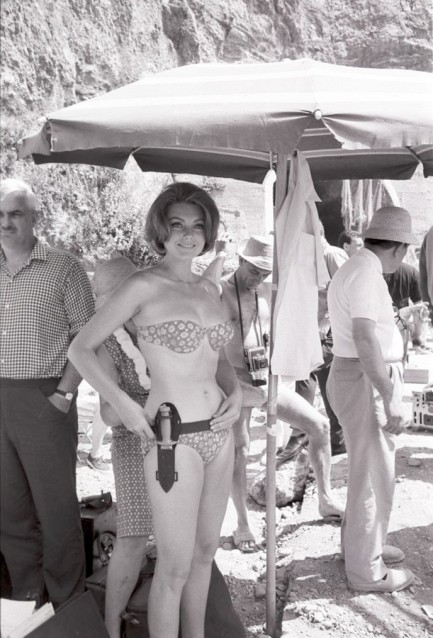 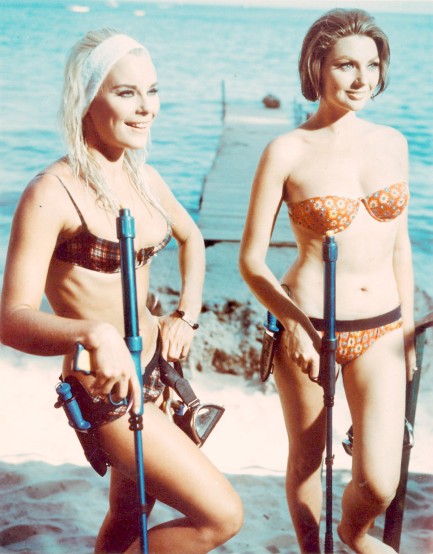
 Is there really such a thing as too much? 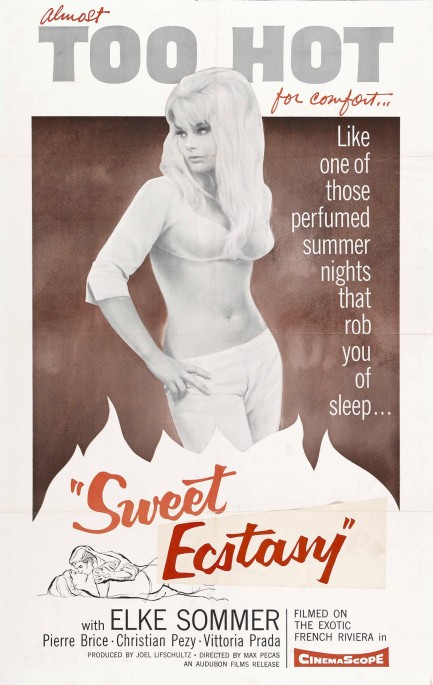
Elke Sommer front and center on a vintage poster claiming she's “almost too hot”? Sign us up. Sweet Ecstasy was originally made in France as Douce Violence—“sweet violence”—and fits loosely into a cycle of films characterized as nouvelle vague, or the French new wave. Director Max Pécas, however wasn't a new wave director. He was better known for his work at the forefront of the cinéma Z style, also known as the nanar sub-genre, films loosely equivalent, we gather, to eroticized b-movies, meaning sex and stupidity. Pécas is also remembered for a trilogy of 1970s Saint-Tropez erotic comedies. But for Douce Violence he's an art director, trying to make a significant statement in the same broad category as La dolce vita or À bout de souffle, aka Breathless.
To that end, what you get here is a group of idle twenty-somethings for whom entitled boredom is the order of the day, as they rip around the French Riviera near and within Cannes, seeking thrills and not caring about the future. When Olivier (Christian Pezey) finds himself drawn into this clan of troublemakers living on their parents' money, their leader Maddy (Pierre Brice) enlists his own girlfriend to be the soft edge of the wedge in a scheme to corrupt the newcomer. It's for Olivier's own good, you see, because he's too bourgeois.
The girlfriend is Sommer, playing a character also named Elke, and she's in vamp mode here, which means cat-eyed make-up and cumulonimbus hair, as she taunts and teases poor Olivier in her efforts to make him into a fellow disaffected youth. Is she too hot? No. Elke is always just hot enough. She and her pals go water-skiing (really Elke in some of the shots), swimming, boating, driving, and most of all, partying. They question convention, conformity, society, mortality, and all the rest. Like other movies of this type, there isn't much plot. Also as in similar films, an event galvanizes and changes the group—or seems as though it might.
The main attraction in the film is Elke, and she delivers what early ’60s audiences wanted—an envelope pushing performance amidst a growing wave of censorship-destroying movies. Like Bardot and others, Sommer shows a lot of skin, and almost—almost—goes topless. Though it's supposed to be gauche to say so about a woman these days (but we don't care, because sex is why we're all here, and it's ultimately all that matters, despite modern attempts to obfuscate it, hide it, police it, and shame it), Elke's very stimulating. And she doesn't even look her best here, due to the crazy make-up and hair. As a final note, we suspect the movie was censored in the U.S. to remove some revealing bikini scenes, some shots of Elke's asscrack, a bare breast caress by a male character, and (probably) some or all of a sweaty, open-shirted dance by a black character. The poster certainly was censored—no doubt about that. The word “ecstasy” was placed to cover the word “violence.” You can just see it if you squint. So the movie's title was set to be literally translated, but that was deemed too much for Americans—or at least some Americans (southerners, we suppose). Douce Violence opened in France and Belgium in early 1962, and reached the U.S. today the same year.  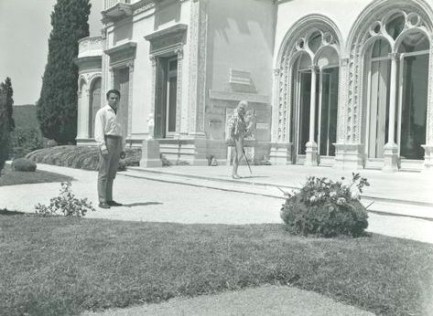 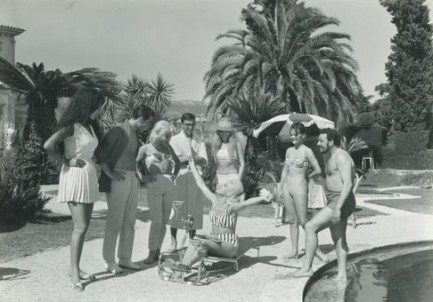 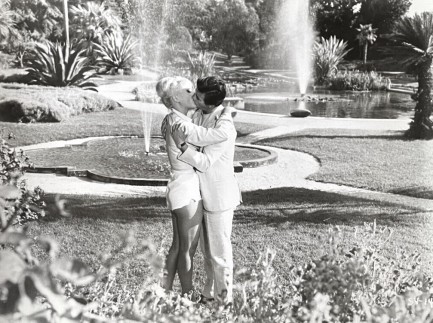 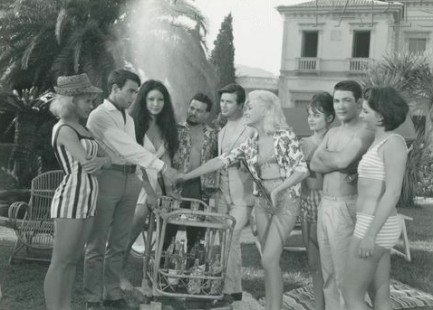 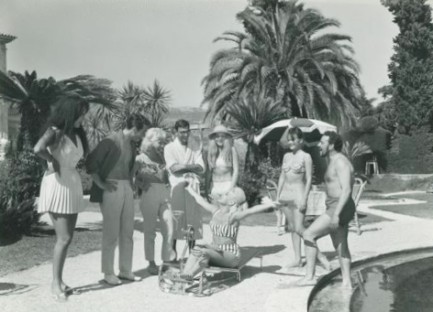  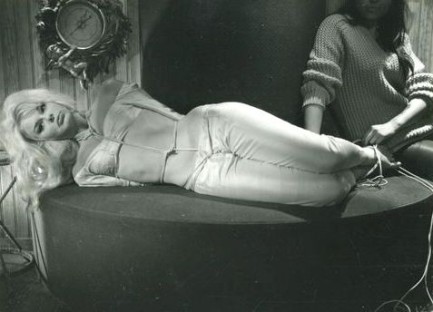 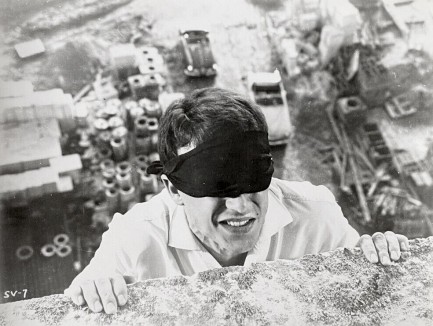 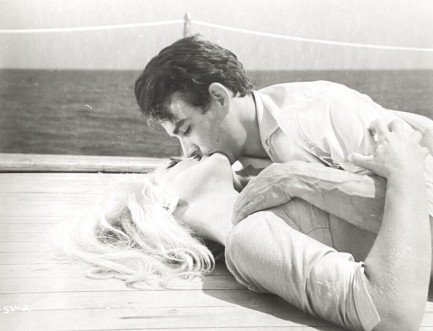 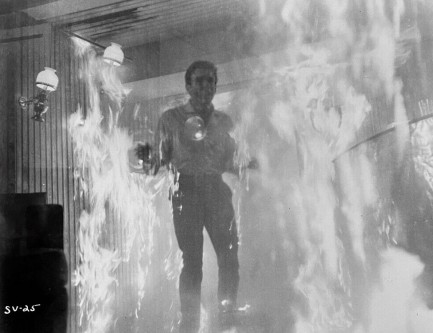 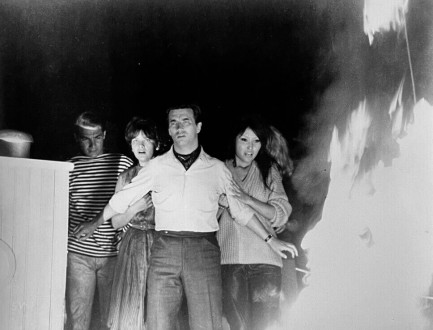 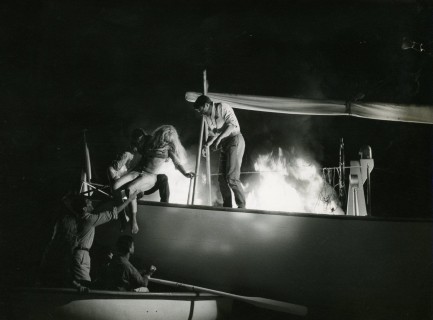 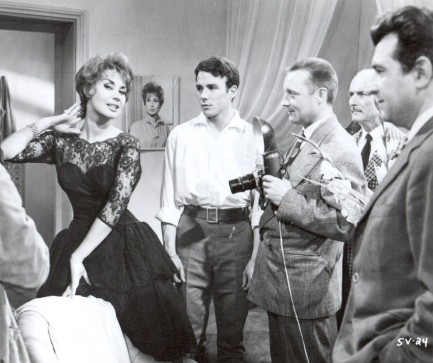 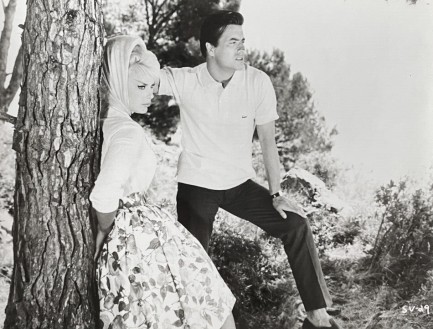 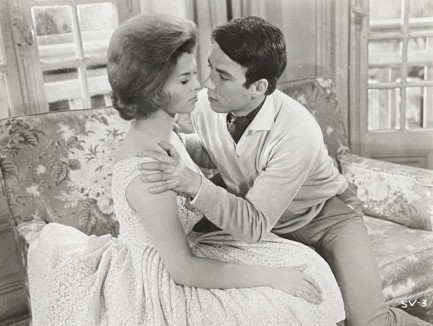 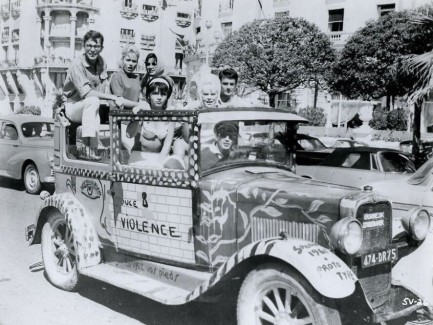 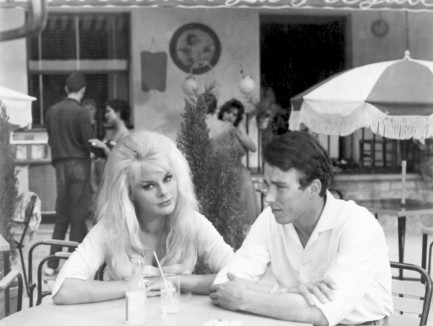 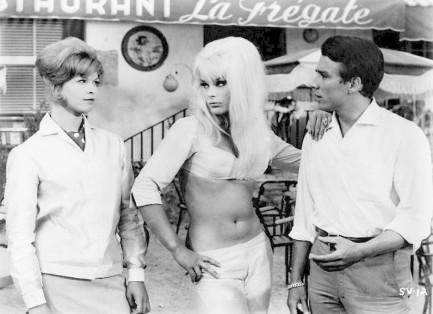 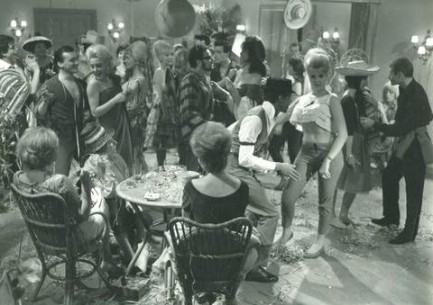 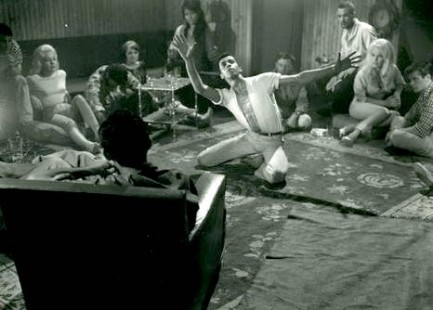 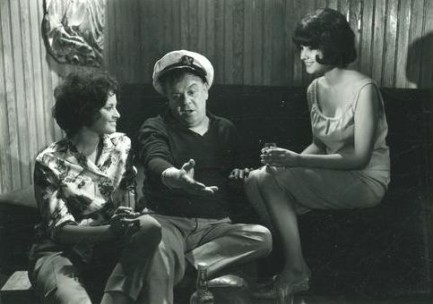 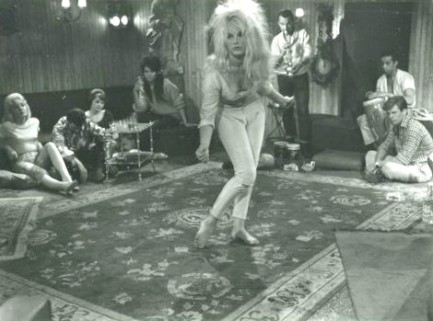 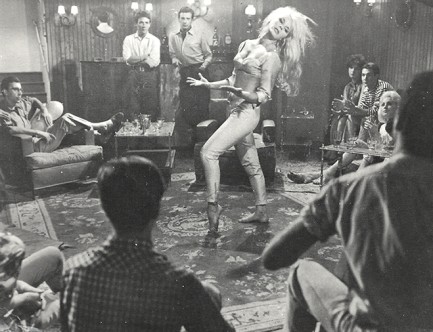 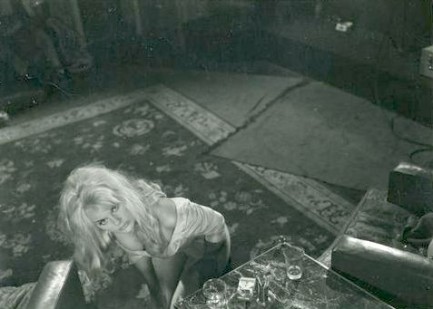 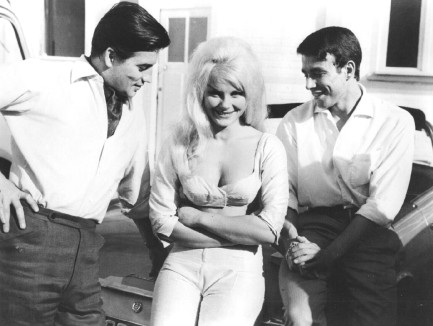 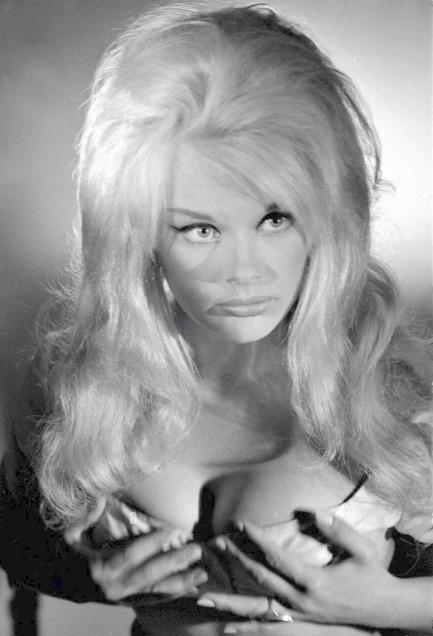 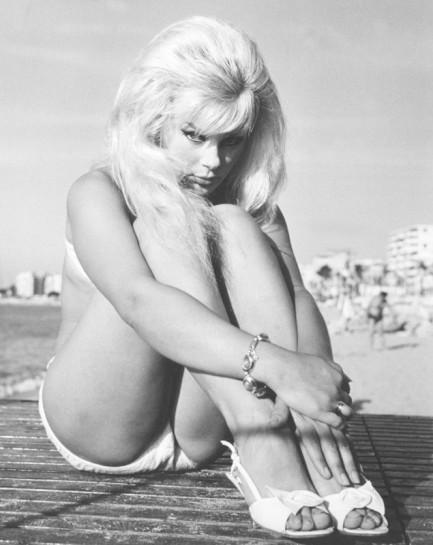
 Sommer photos paint a portrait of relaxation. 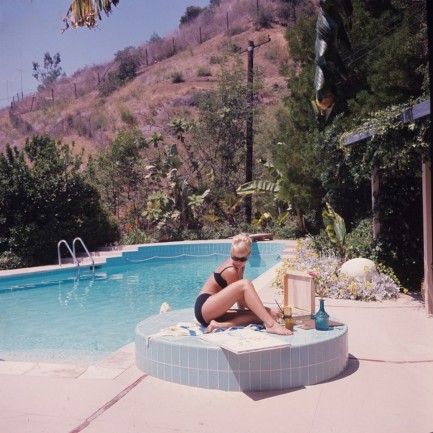 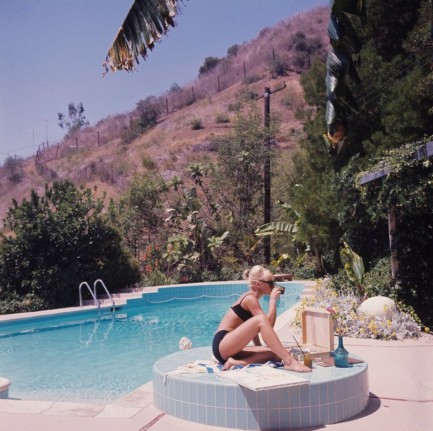 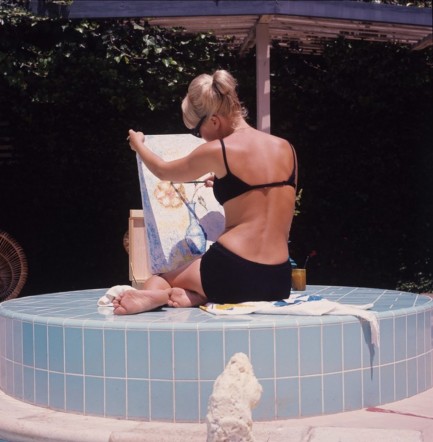 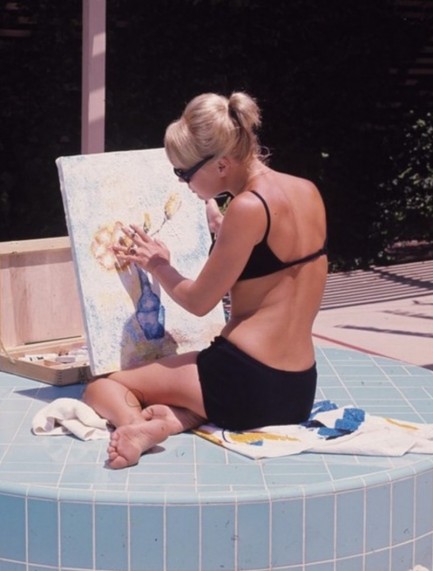
These photos show German actress Elke Sommer painting in the yard of her Los Angeles home. They're obviously staged, because we don't think she'd choose a hard tile surface to sit on while doing her work, but the shots are nice. We don't have a date on them, but if we had to guess we'd say they're from the late 1960s. Sommer began painting when she was young, and continued throughout her film career and afterward. She once told an interviewer, “I am really closest to me being myself with paint. I paint anyplace. When I am at home I paint outside, in the nude, for up to eight hours at a stretch. I paint with acrylics, so when I'm finished I just jump in the pool.” In 1984 Sommer published a book titled Painting with Elke Sommer, and had a television show of the same title during the 1980s, on which she wore clothes, sadly. So, what does Elke paint? See an example below.
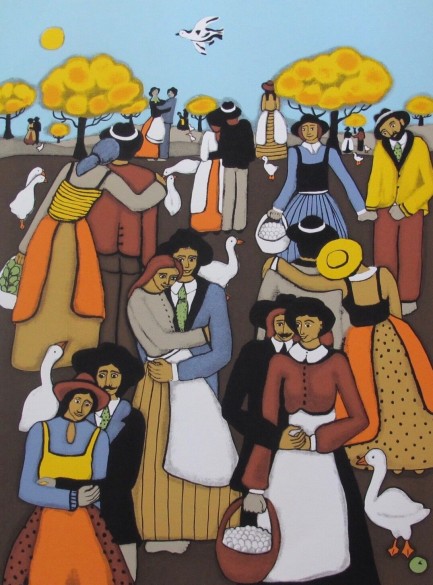
 Voulez vous Rendez-Vous avec moi ce soir? 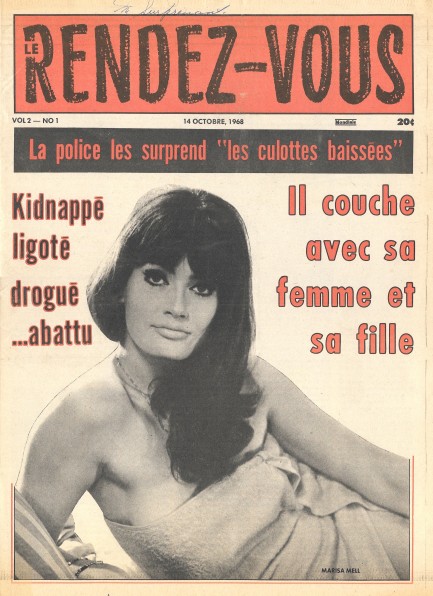
We have a new Canadian tabloid for you, an issue of Le Rendez-Vous published today in 1968 with a cover shot of Austrian star Marisa Mell, and in the centerfold a brilliant photo of German actress Elke Sommer we're pretty sure has never been seen online before. We had to scan that in four pieces and merge the quadrants, which is time consuming, but in this case worth it, because—as you know if you visit the site often—we think Sommer is one of the all-time vintage goddesses. And speaking from a graphic design perspective, we think we did a pretty good job of assembling her, if we may say so. Fellow German actress Babsi Zimmermann also makes an appearance, and we thought we'd never see her again, but 1968 seems to have been a very visible year for her—particularly in Canadian tabloids. In typical cheapie scandal sheet style, Le Rendez-Vous is filled with ridiculous material on subjects ranging from crime to medicine. You'll see a photo below of a human brain. The text there says, unsurprisingly, “Finally the secret of immortality... We can keep the brain alive separated from a dead body!” A Doctor Jacobsen claims brain transplants will become as popular as heart transplants. Okay, but heart transplants aren't popular—they're necessary. Big difference. However, if brain transplants were ever to become routine, we'd take one. Sure why not? It would be the ultimate mind altering experience, and we've never been against those. Twenty-plus scans below.  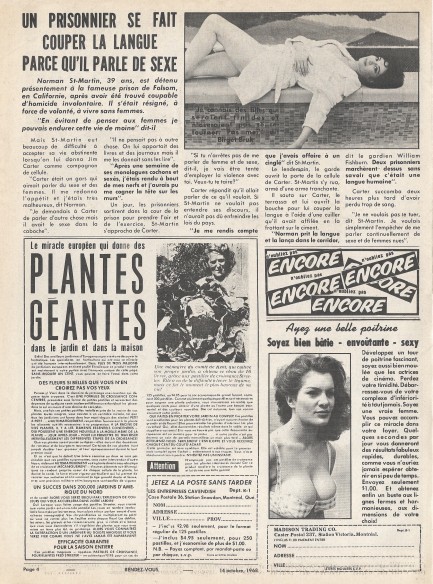 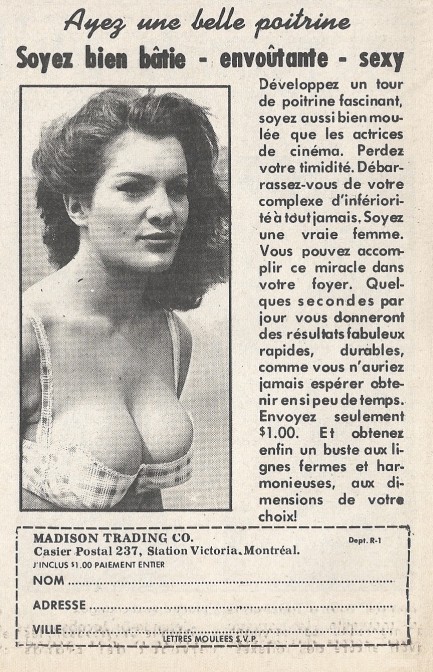 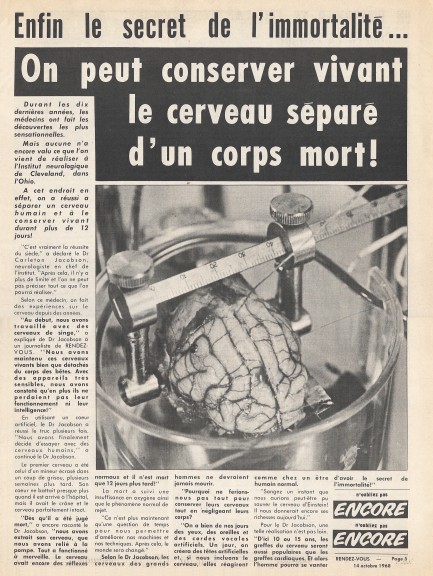 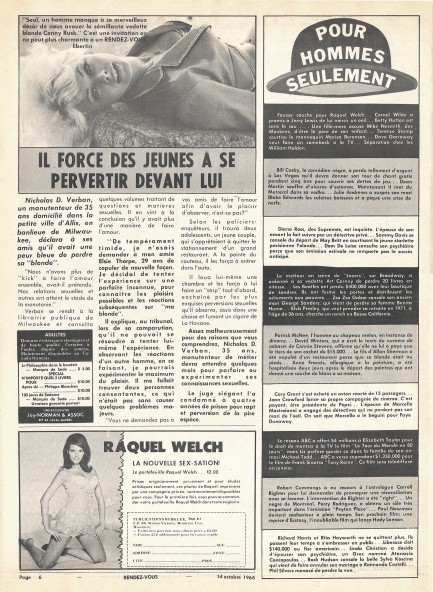 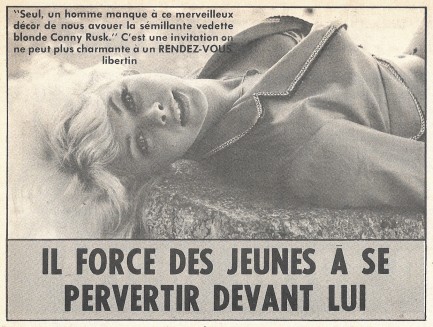 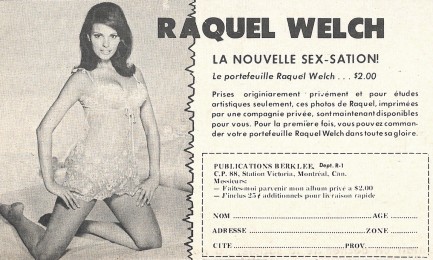  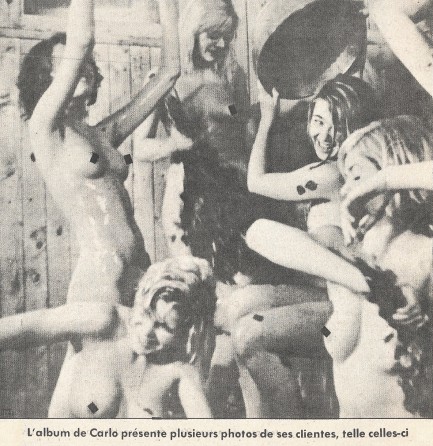 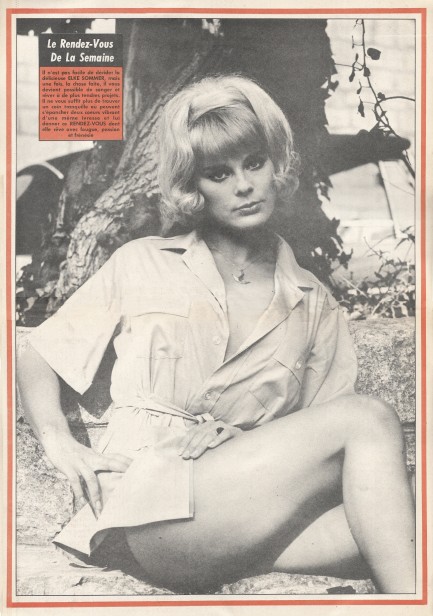 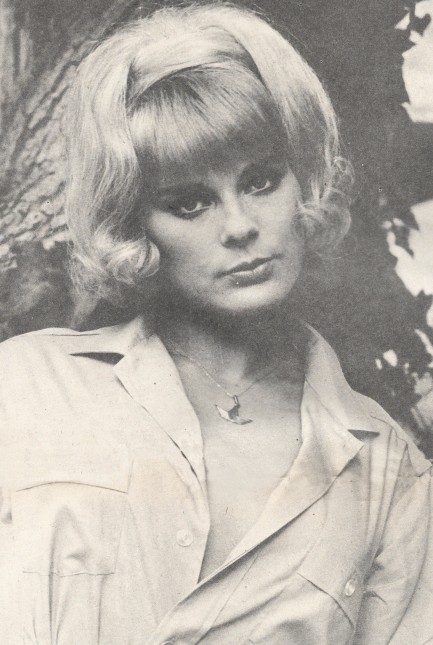 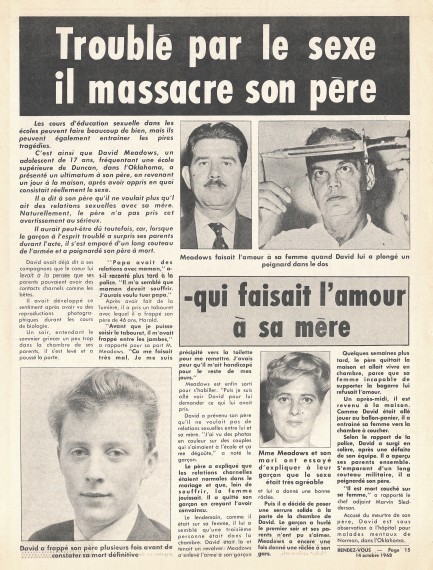 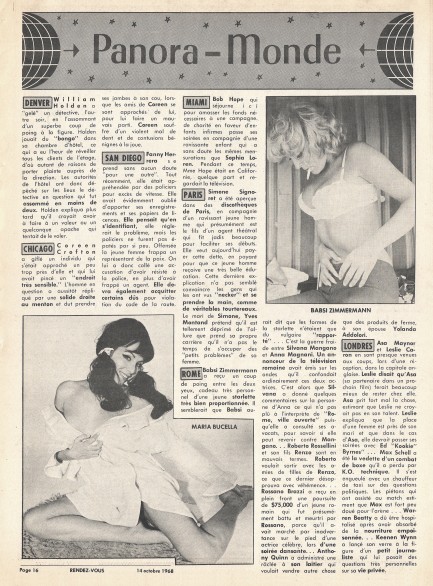 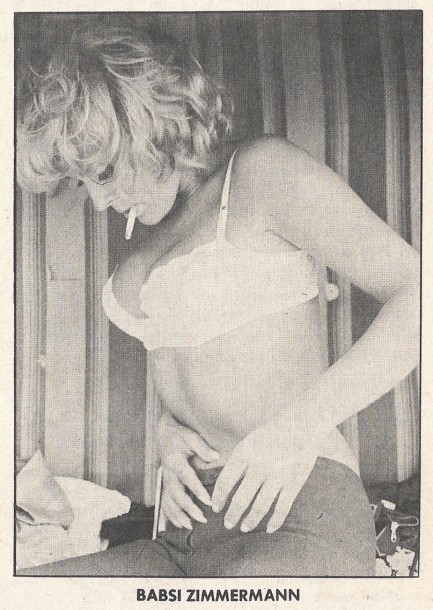 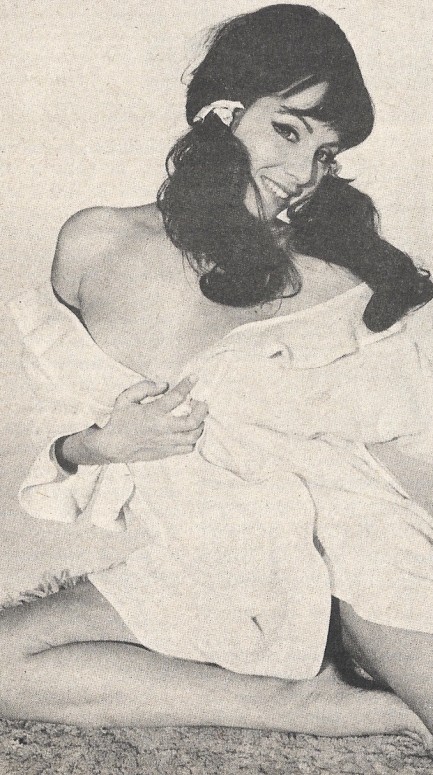 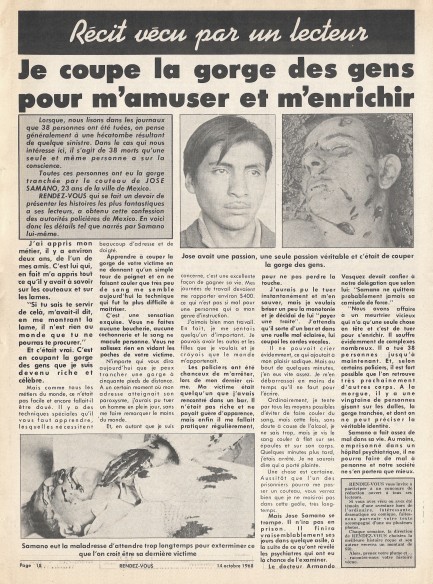 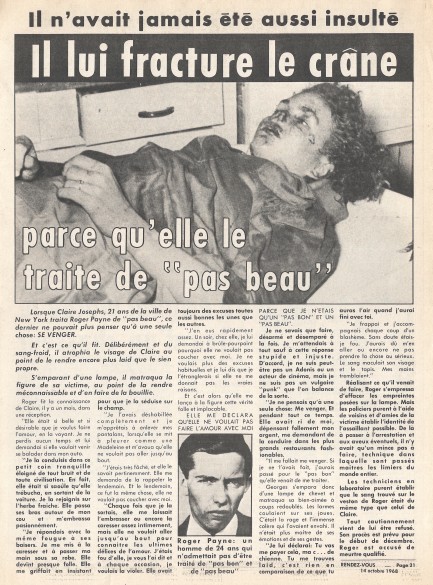 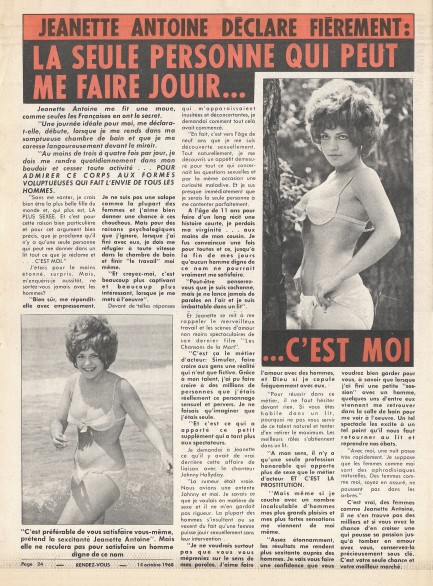 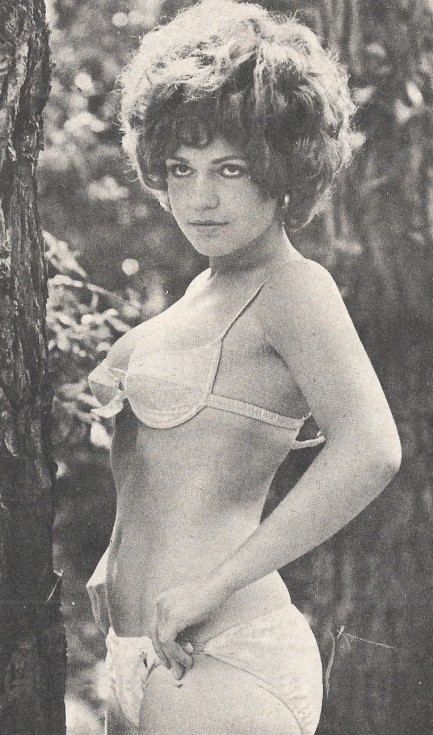
 Cancans de Paris is always uncanny. 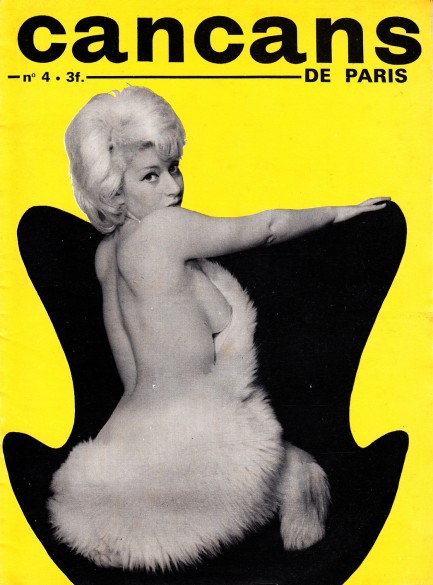 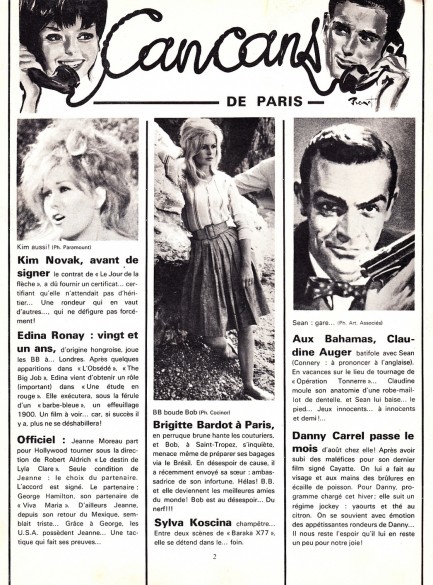 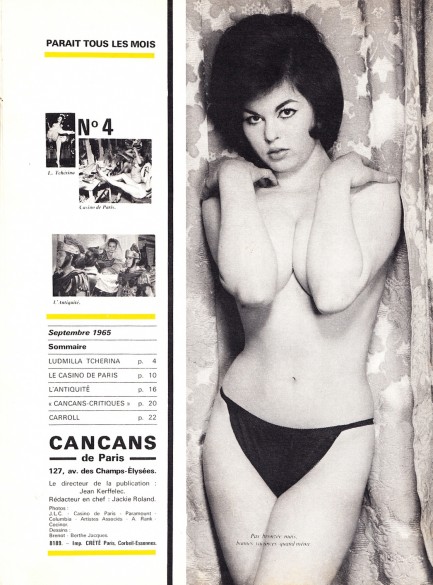 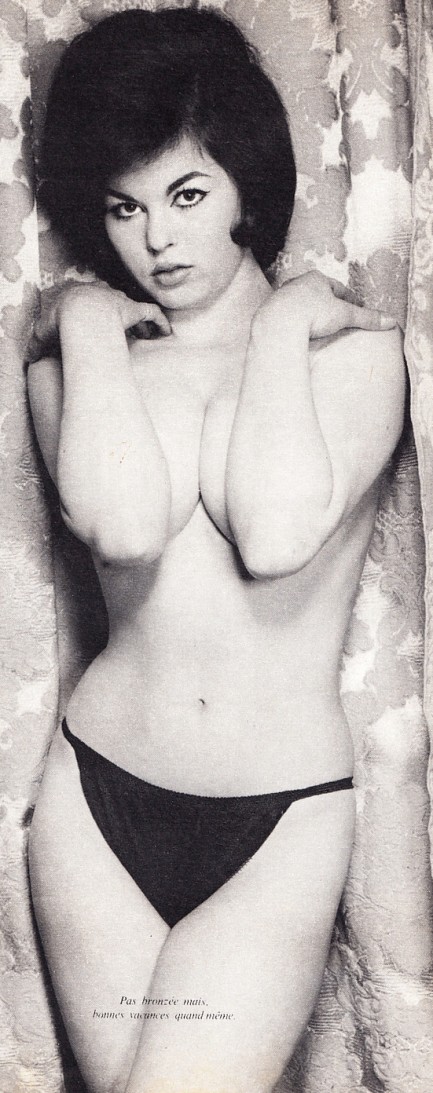 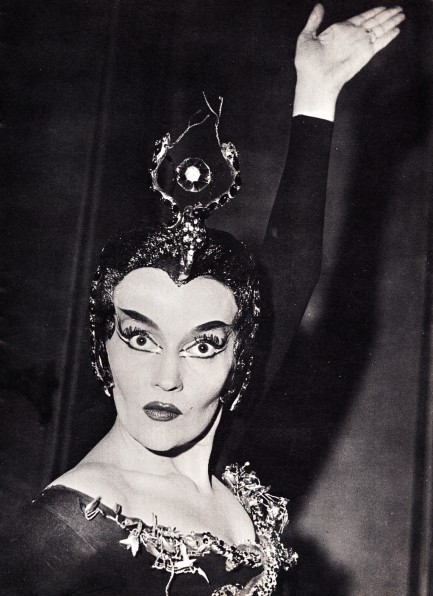 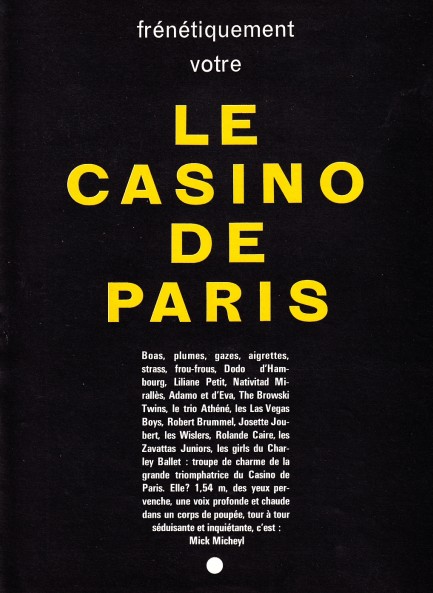  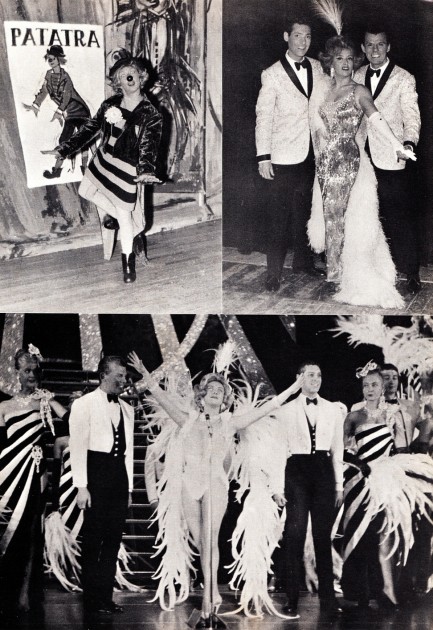 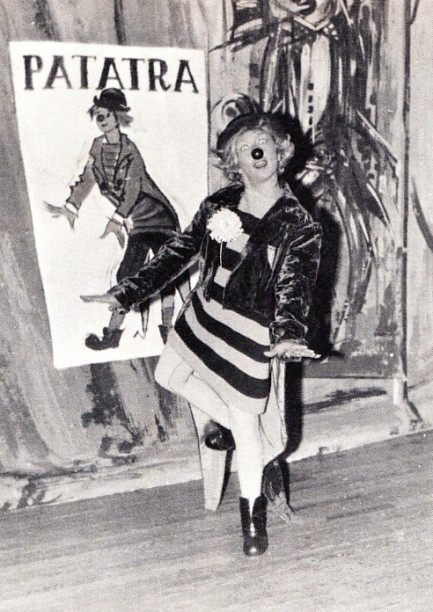 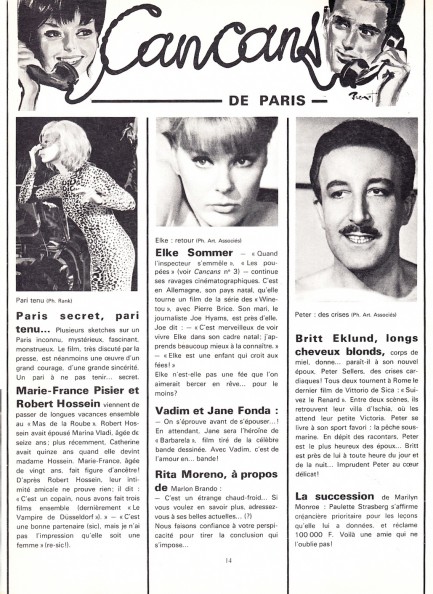 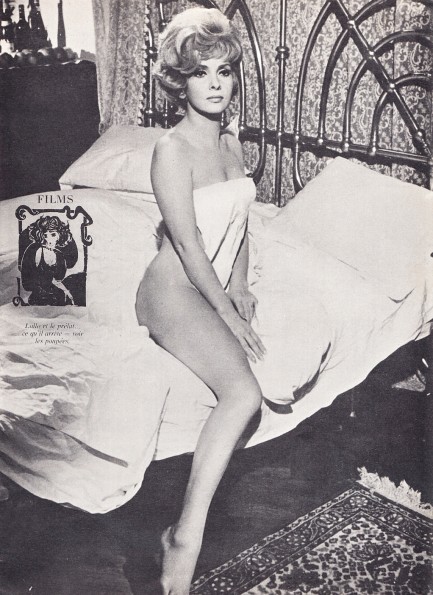 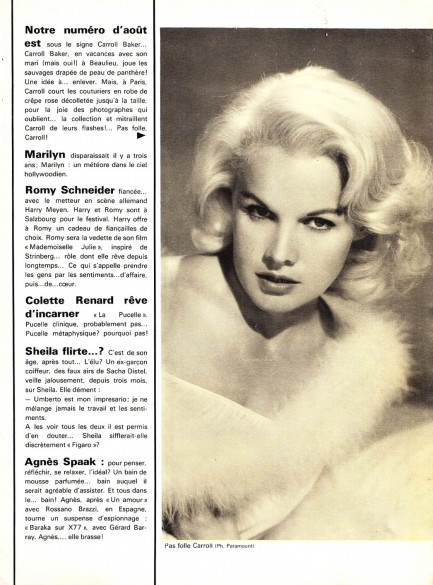 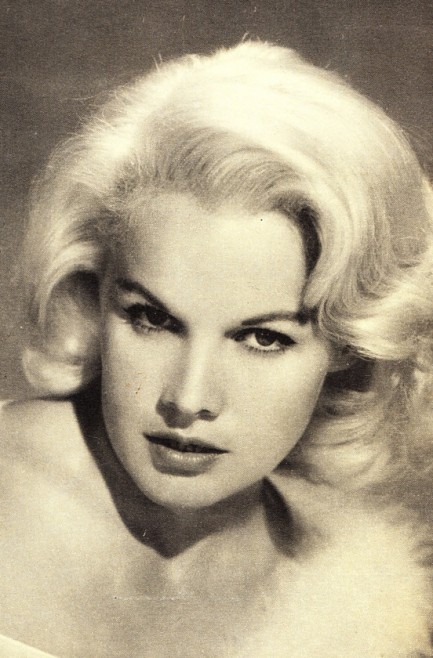 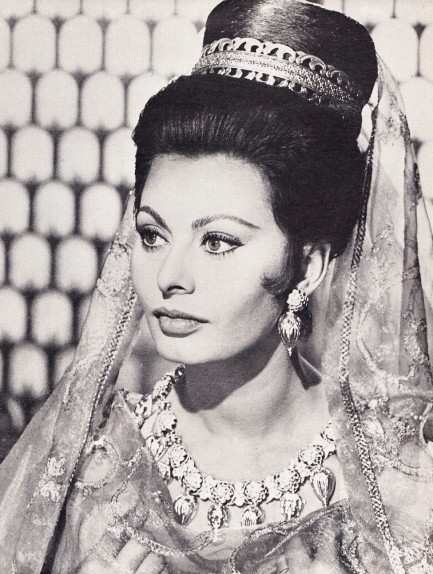 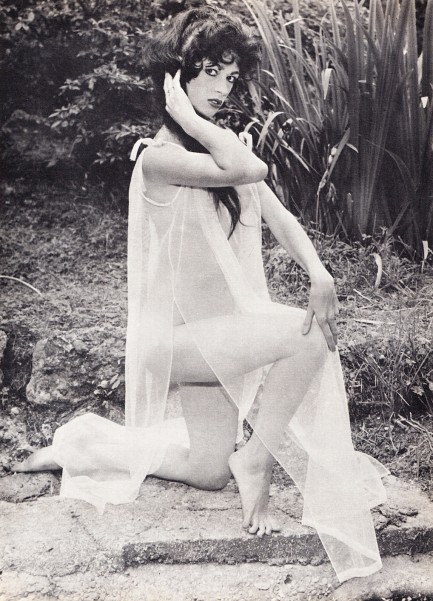 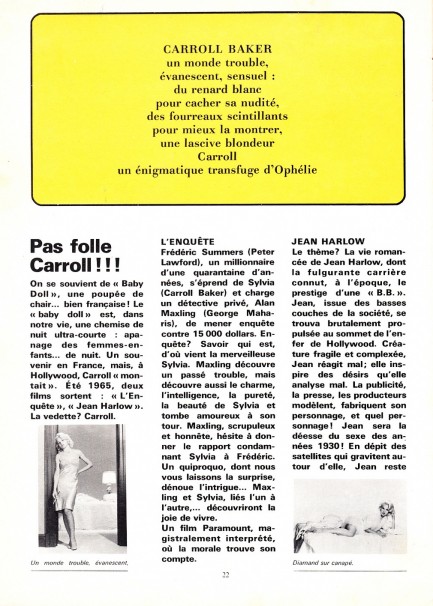 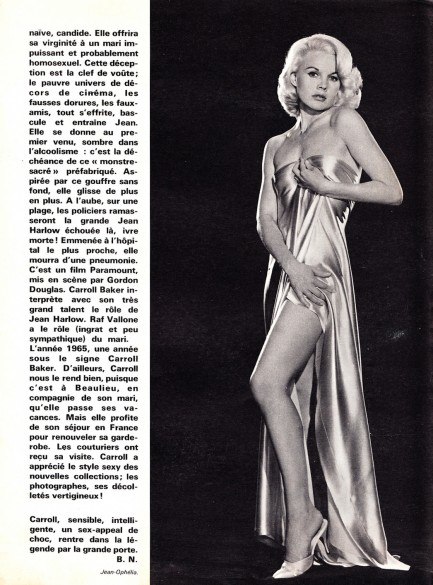 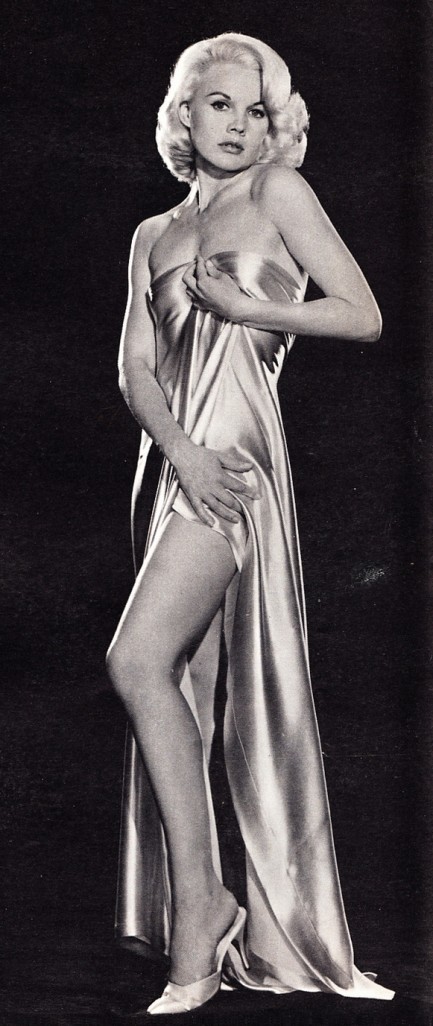 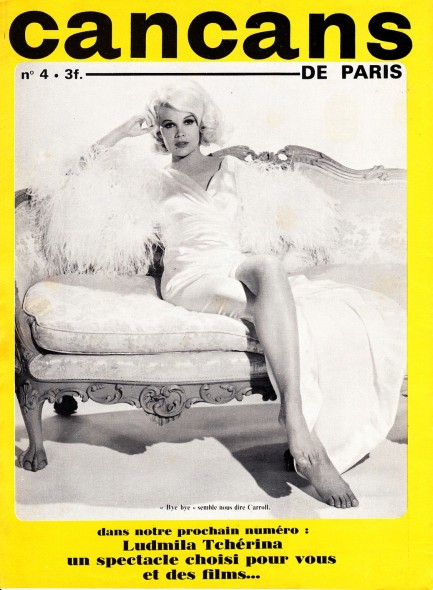
Above: a few pages from the French burlesque publication Cancans de Paris, the seventh time we've taken a look at this mag, with this example dating from September 1965. As always there are mainstream celebrities mixed in with the peelers, including Carroll Baker, Brigitte Bardot, Elke Sommer, Kim Novak, Sean Connery, Sophia Loren, Gina Lollobrigida, and French born ballerina Ludmilla Tchérina. At the top of panel two there's also a minor Raymond Brenot illustration. See some major ones here, and just click the Cancans keywords below if you want to see more issues.
 Where Elke is concerned a cigar is never just a cigar. 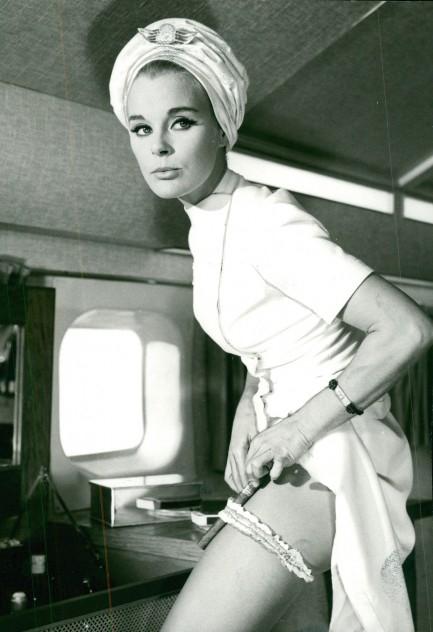
You know the famous quote attributed to Sigmund Freud, right? He's sometimes criticized for having seen phallic symbols and sexual subtext where they didn't exist, but apparently he once said, “Sometimes a cigar is just a cigar.” But not in this case. In 1967's Deadlier Than the Male, Elke Sommer's cigar is an explosive she uses to assassinate someone, blowing his airplane out of the sky as she parachutes safely to the ground. It's a cheeseball movie, but her turn as the ultimate femme fatale makes it worth watching. You can read more about it here, and see plenty more Elke here, there, and everywhere.
 Hi, this is Elke calling from Down Under. Can I speak to my agent? There's been a trademark infringement. 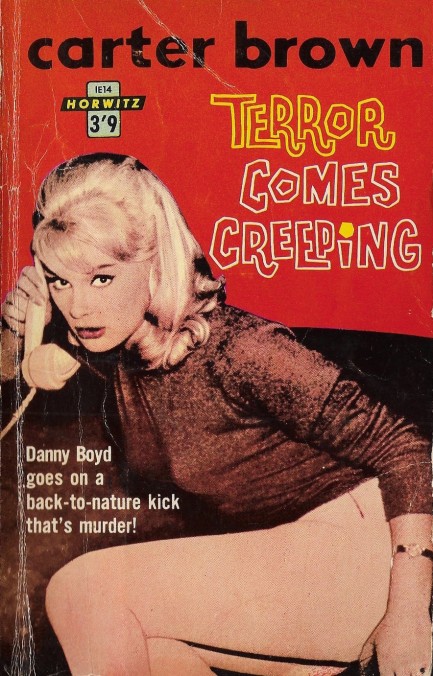
As usual the Aussie publishing company Horwitz has used a film star on one of its book covers—this time German goddess Elke Sommer on the front of 1959's Terror Comes Creeping. She was a favorite of theirs—we've seen her on four covers, including this one, and we've speculated that they're all unlicensed, for reasons discussed here. This one stars Carter Brown's, aka Alan G. Yates's franchise sleuth Danny Boyd, who's hired by a woman named Martha Hazelton who thinks her father is killing off his children—with her next in line—in order to avoid losing his dead wife's inheritance. The father, when confronted by Boyd, says that insanity runs in the family and his daughter is paranoid and probably nuts. It certainly seems that way when Boyd meets his client's loopy, danger obsessed little sister, but of course matters soon begin to look far more complicated than they seemed at first. On one level it's amazing Carter Brown sold something like 120,000,000 books, because his work is not special. But on the other hand it's fast, sometimes funny, and hits the right notes for detective novels. So maybe his success isn't so strange after all. We'll probably read another, because we have a few.
 All the best people showed up. 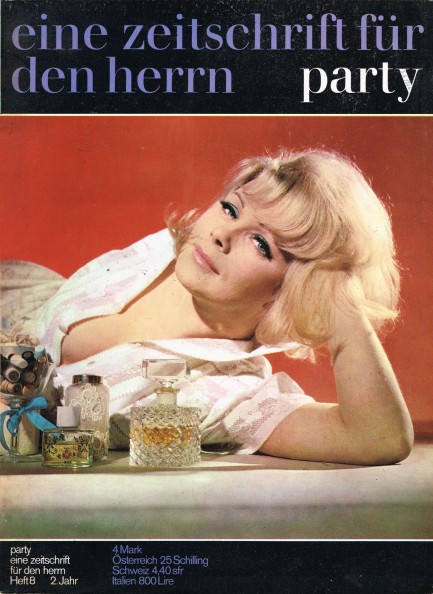
The West German pop culture and celeb magazine Party, which was produced in Hannover by Lehning Press, is an obscure publication. It's very vivid, with bright color, many full page photos, and many film celebrities represented. Equal time is given to unknowns too, for example, the cover features Annelies Niessner, who was... we have no idea, and inside a color page is given to Cornelie, identified only as a “millionärstochter geht eigene wege,” a millionaire's daughter who goes her own way.
In terms of celebs you get Carol Lynley, Jane Russell, Sandra Dee, Stella Stevens, Laya Raki, a beautiful portrait of Jane Fonda, numerous shots of Ursula Andress, and many others. This publication didn't waste words, even on the copyright date. The cover tells us this is issue eight, so we're going to say it came in August, and we're thinking it's from 1967. Though it may be short on info, Party is an appropriate name, because it's a very fun magazine. We have several more issues, so look for those later.  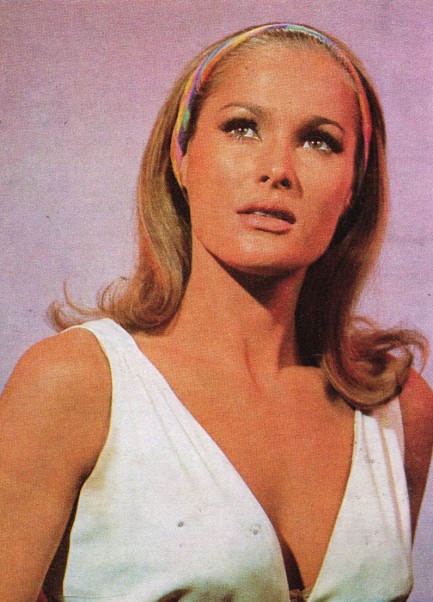 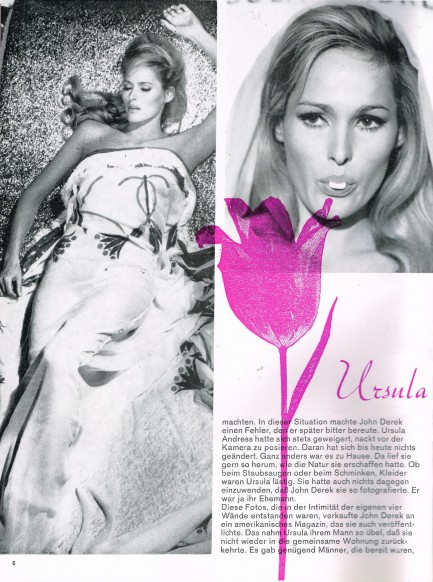 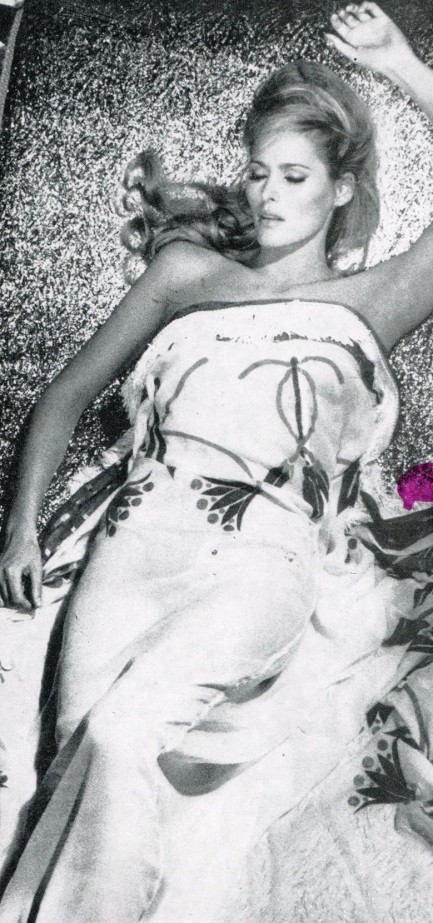 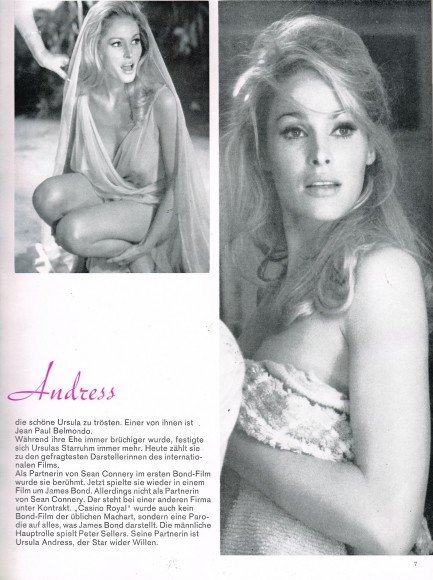 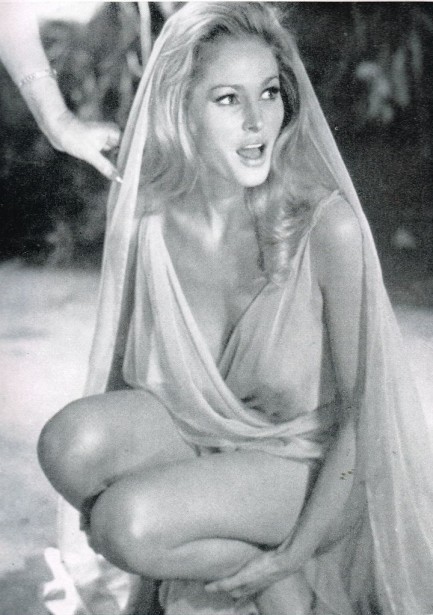 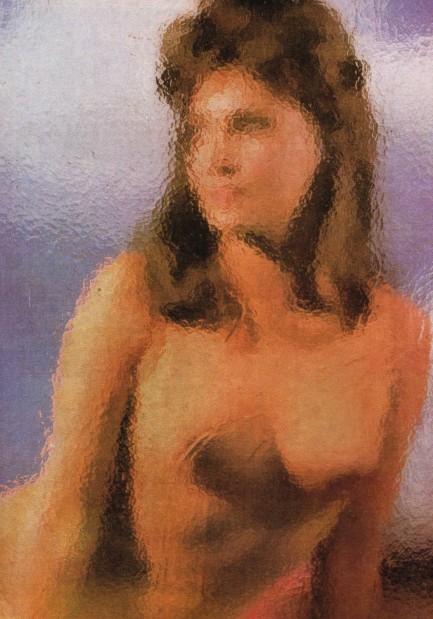 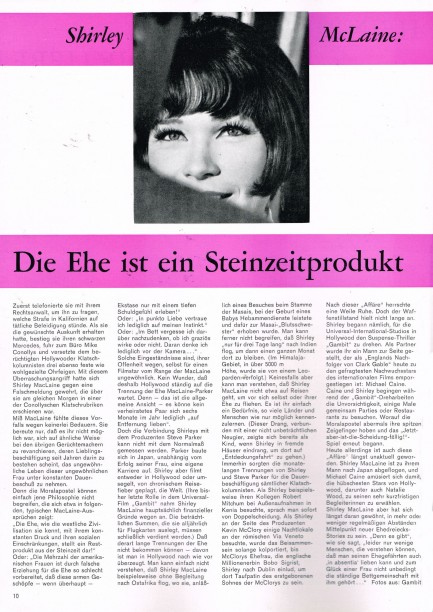 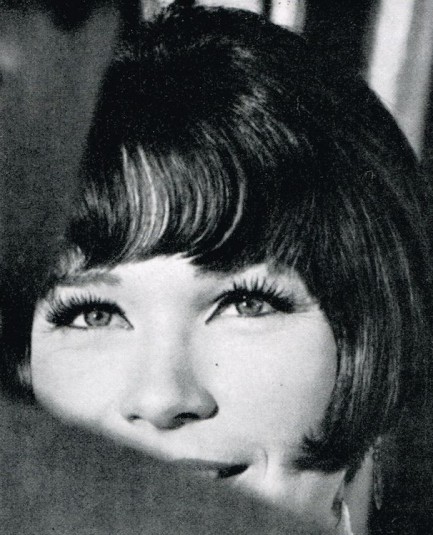 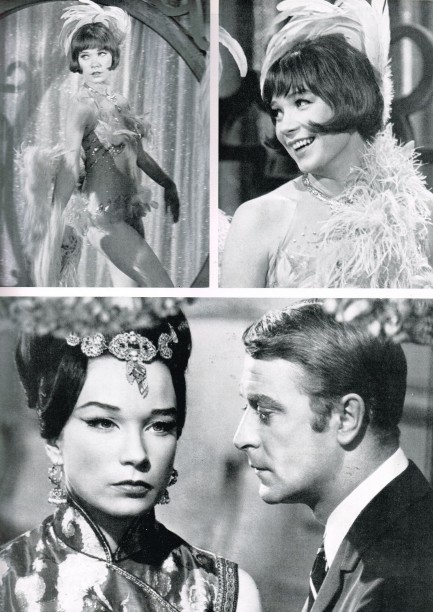 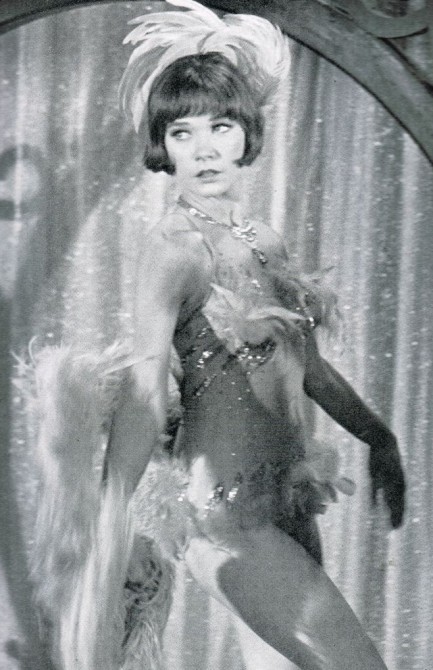 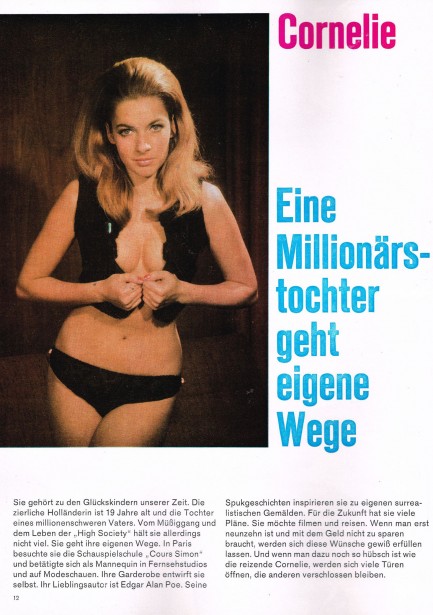 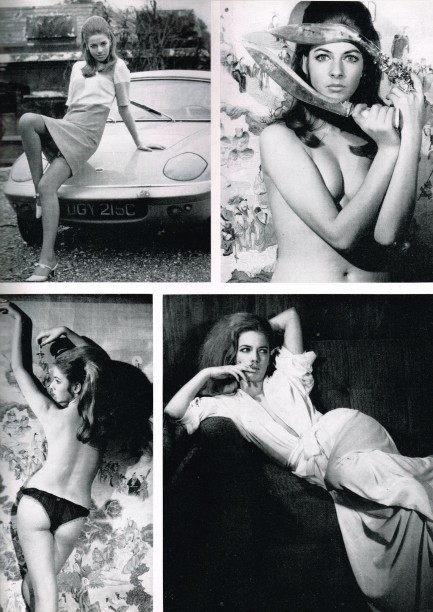 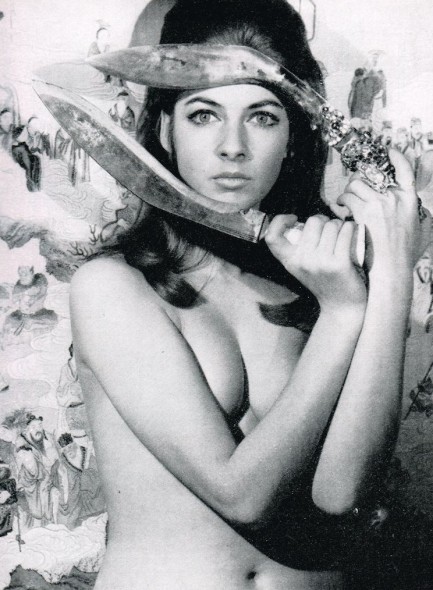 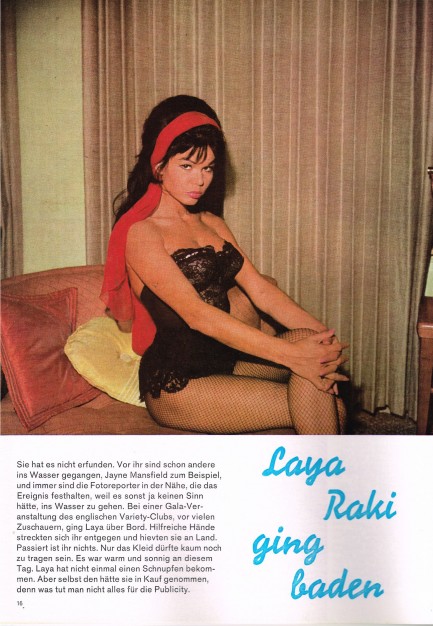 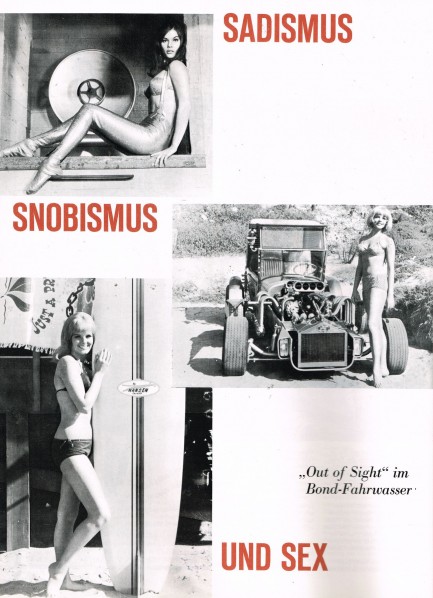 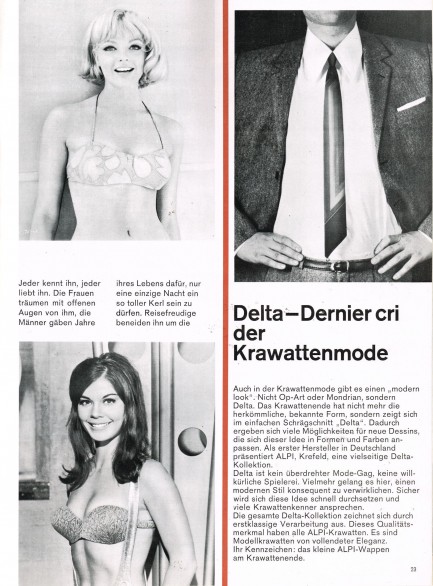 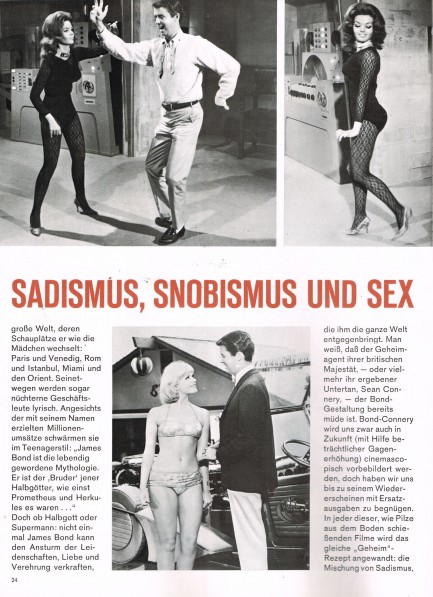  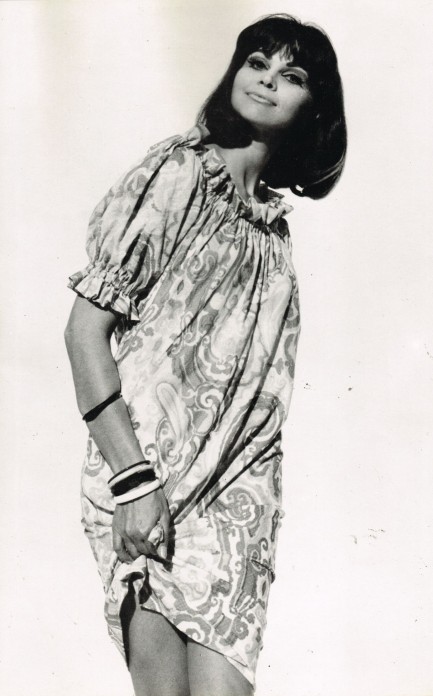 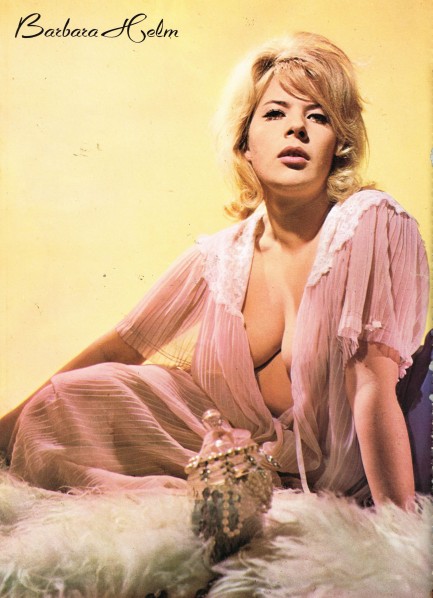 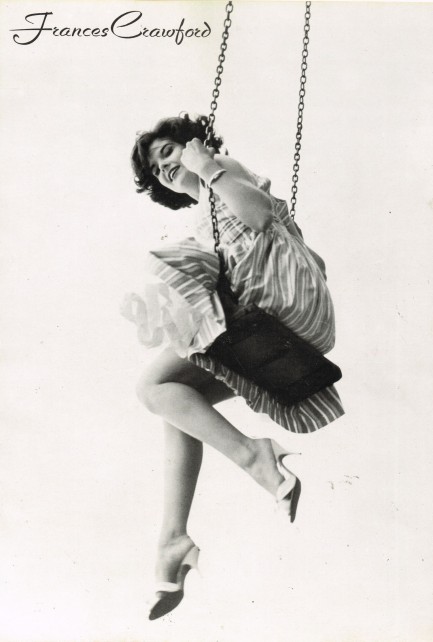  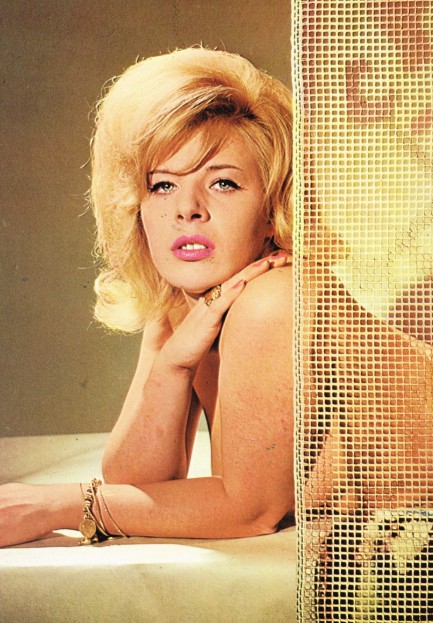 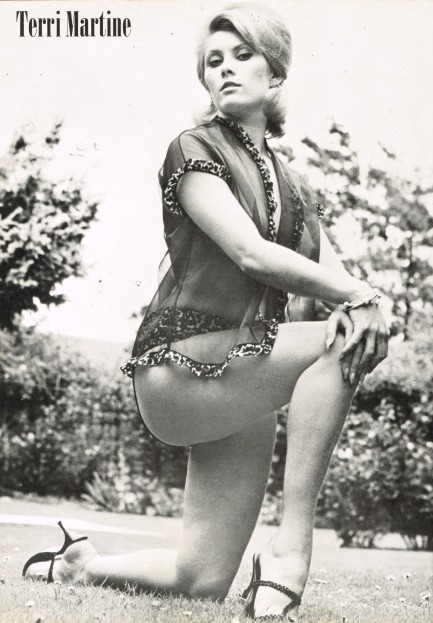  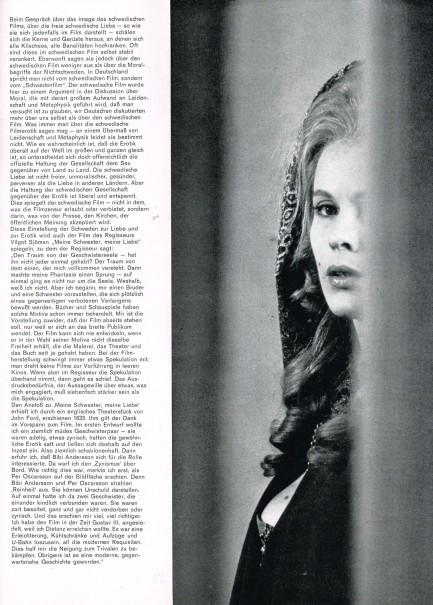 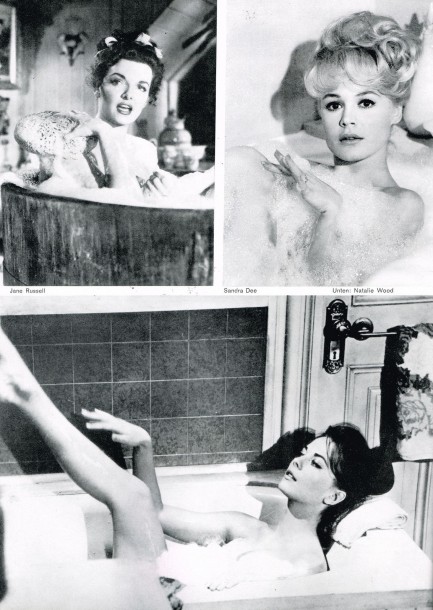 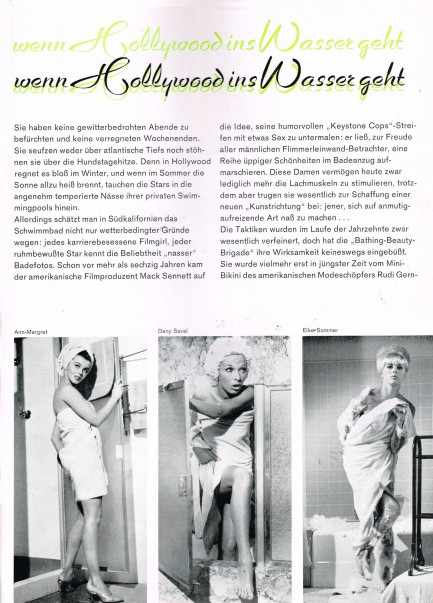 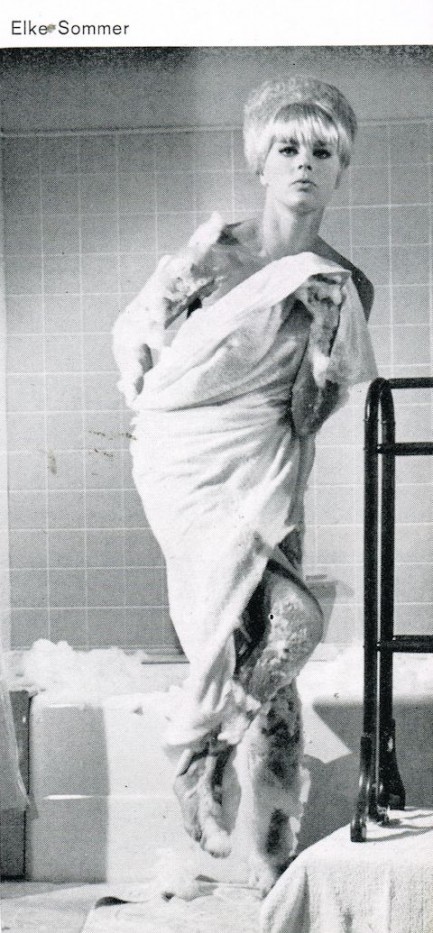 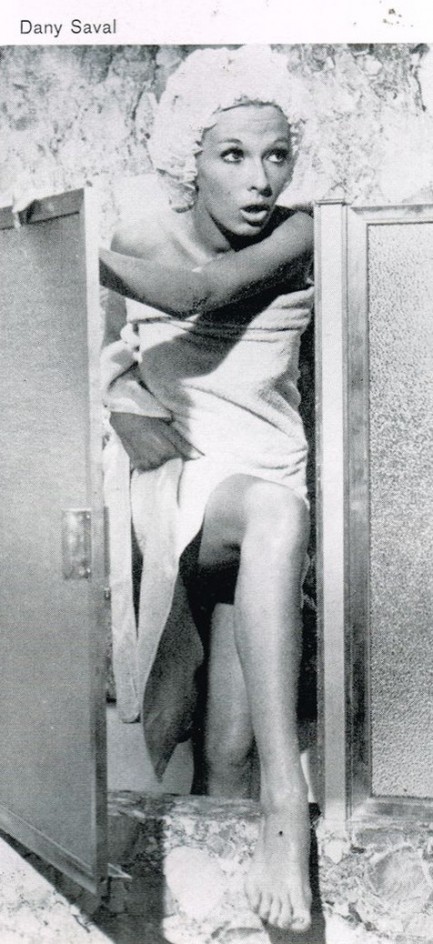 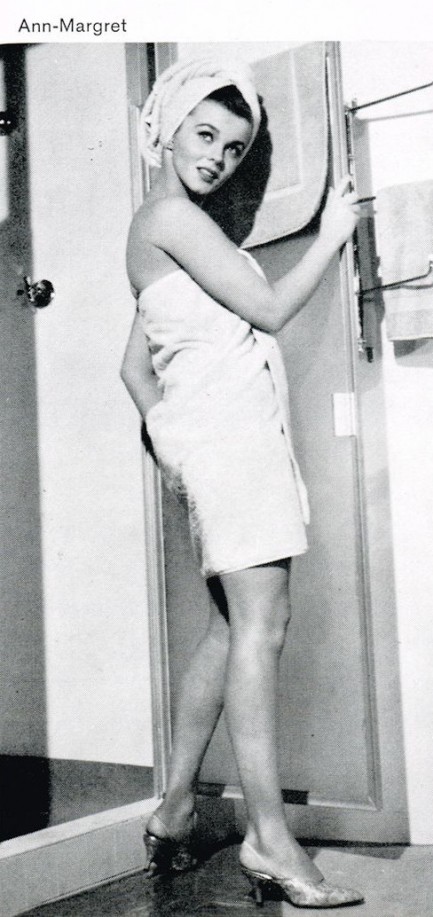 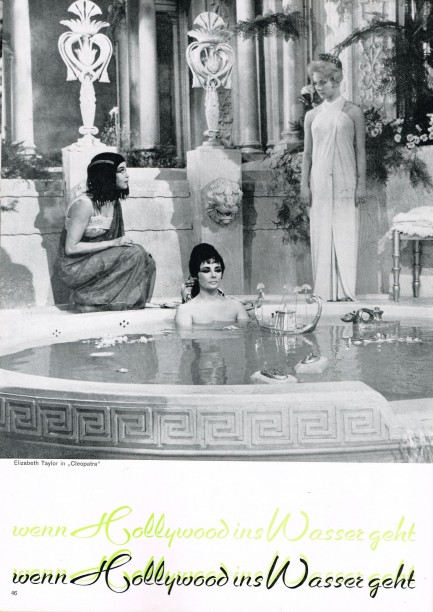 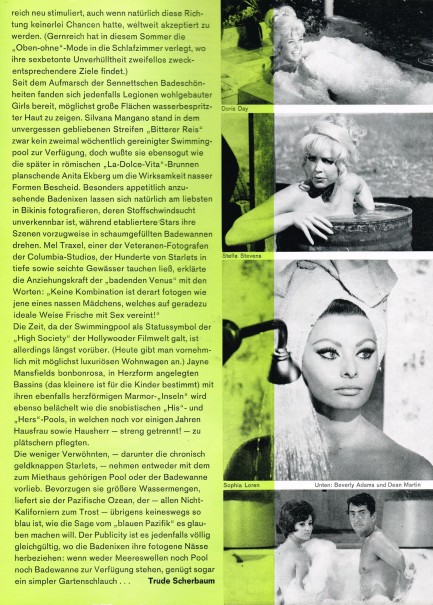 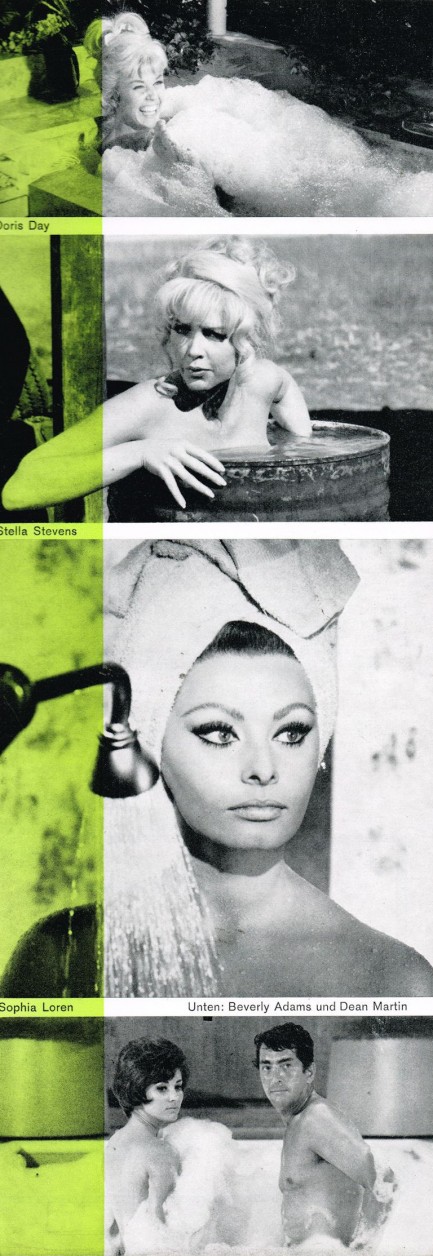 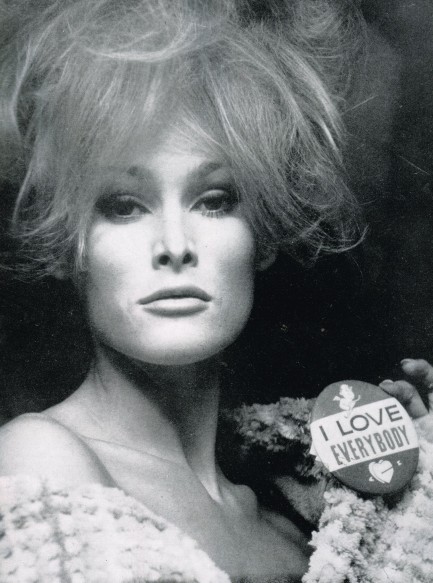 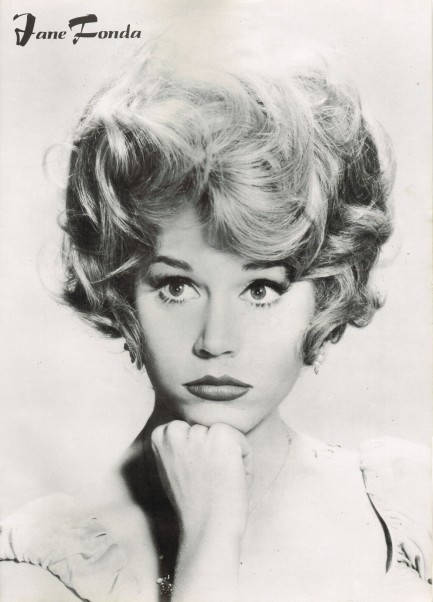 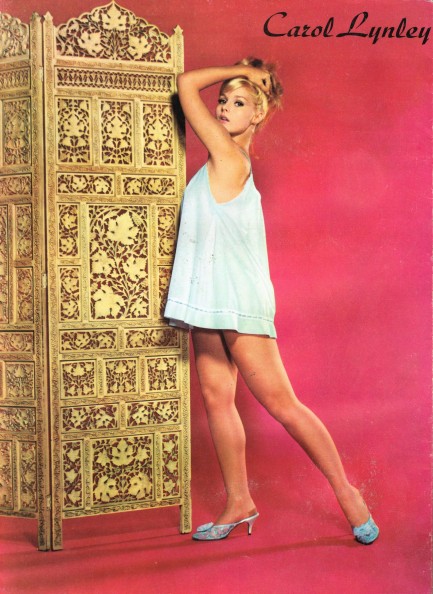

|
 |

The headlines that mattered yesteryear.
2003—Hope Dies
Film legend Bob Hope dies of pneumonia two months after celebrating his 100th birthday. 1945—Churchill Given the Sack
In spite of admiring Winston Churchill as a great wartime leader, Britons elect
Clement Attlee the nation's new prime minister in a sweeping victory for the Labour Party over the Conservatives. 1952—Evita Peron Dies
Eva Duarte de Peron, aka Evita, wife of the president of the Argentine Republic, dies from cancer at age 33. Evita had brought the working classes into a position of political power never witnessed before, but was hated by the nation's powerful military class. She is lain to rest in Milan, Italy in a secret grave under a nun's name, but is eventually returned to Argentina for reburial beside her husband in 1974. 1943—Mussolini Calls It Quits
Italian dictator Benito Mussolini steps down as head of the armed forces and the government. It soon becomes clear that Il Duce did not relinquish power voluntarily, but was forced to resign after former Fascist colleagues turned against him. He is later installed by Germany as leader of the Italian Social Republic in the north of the country, but is killed by partisans in 1945.
|

|
|

It's easy. We have an uploader that makes it a snap. Use it to submit your art, text, header, and subhead. Your post can be funny, serious, or anything in between, as long as it's vintage pulp. You'll get a byline and experience the fleeting pride of free authorship. We'll edit your post for typos, but the rest is up to you. Click here to give us your best shot.

|
|















































































































































